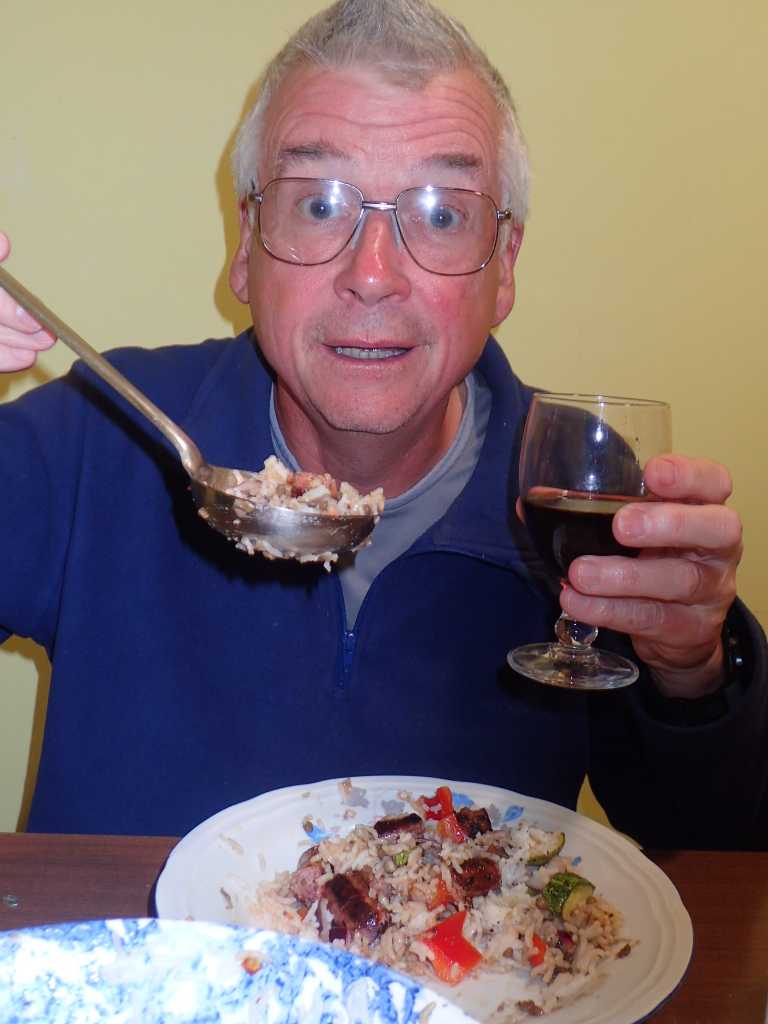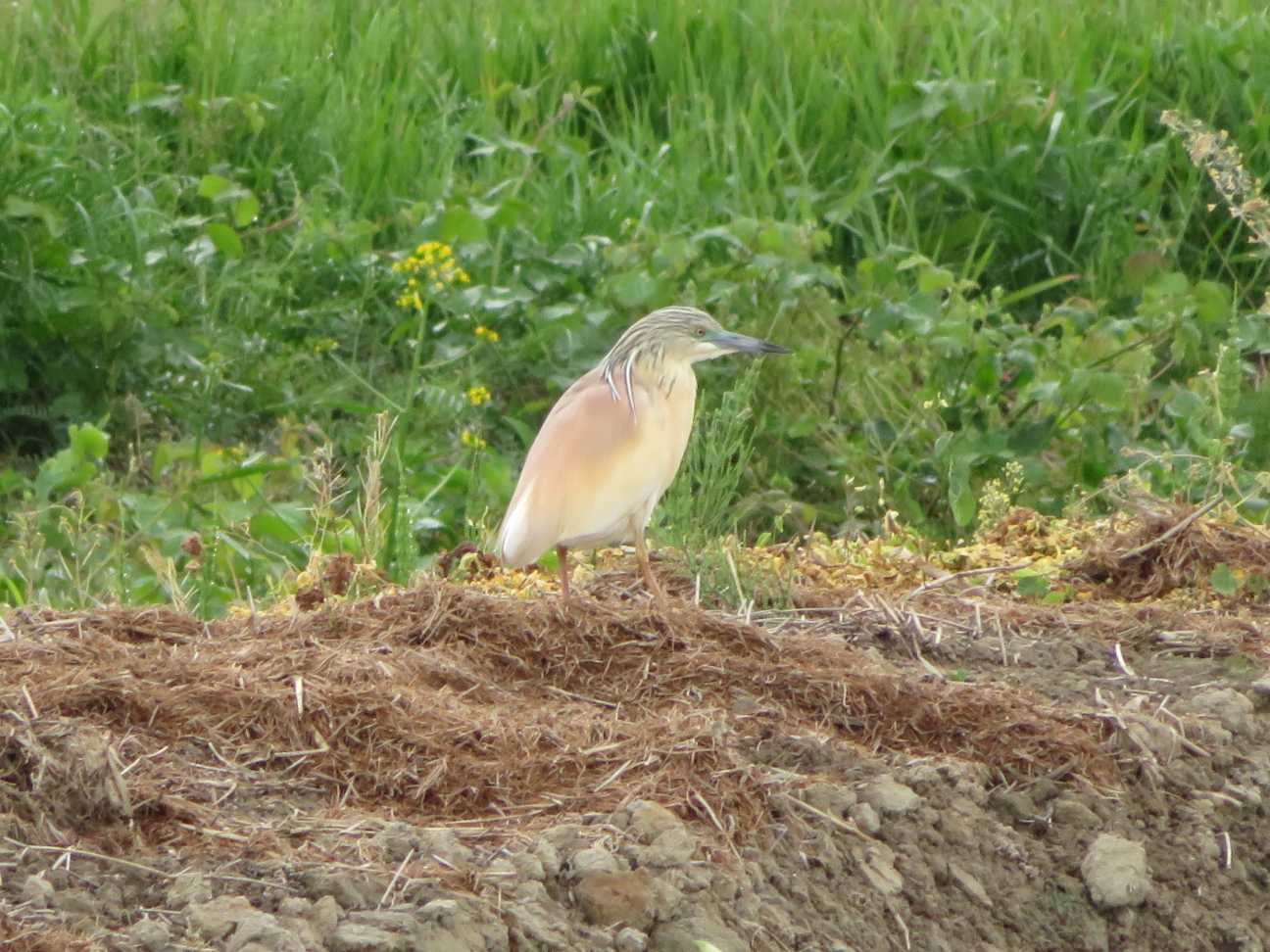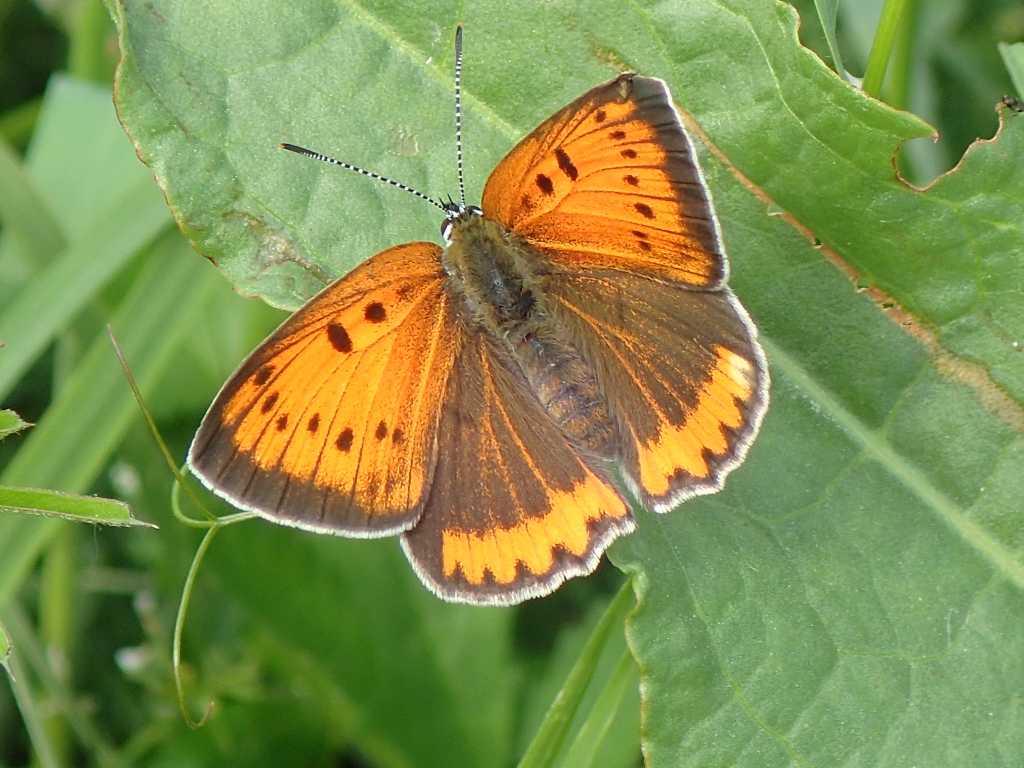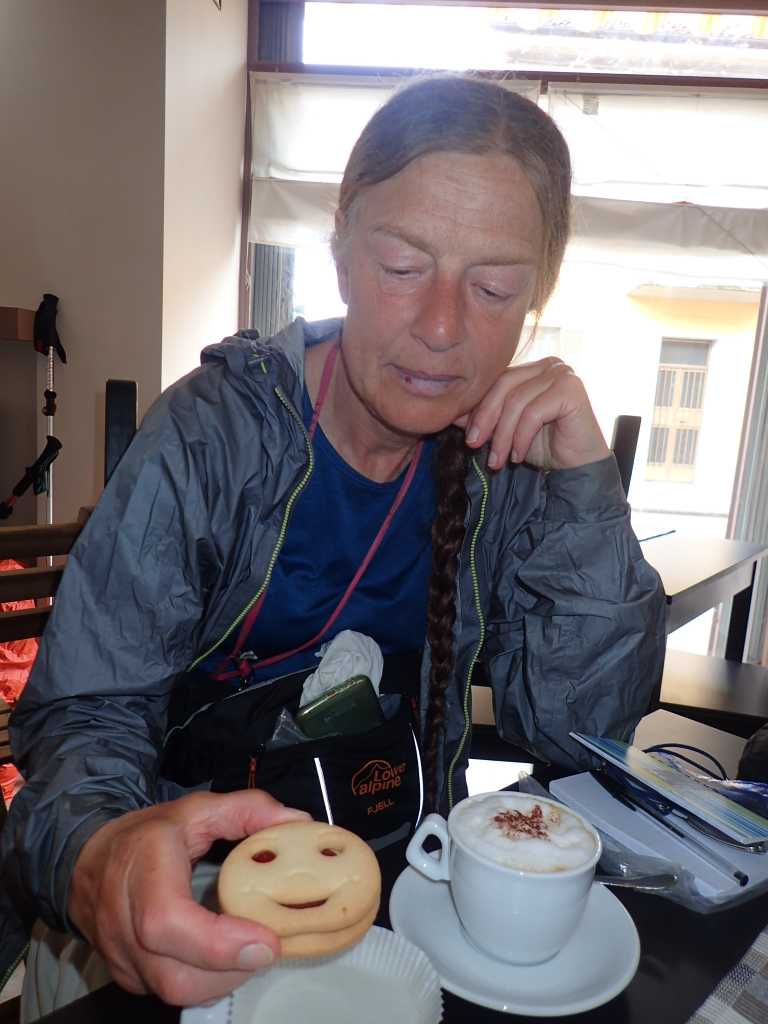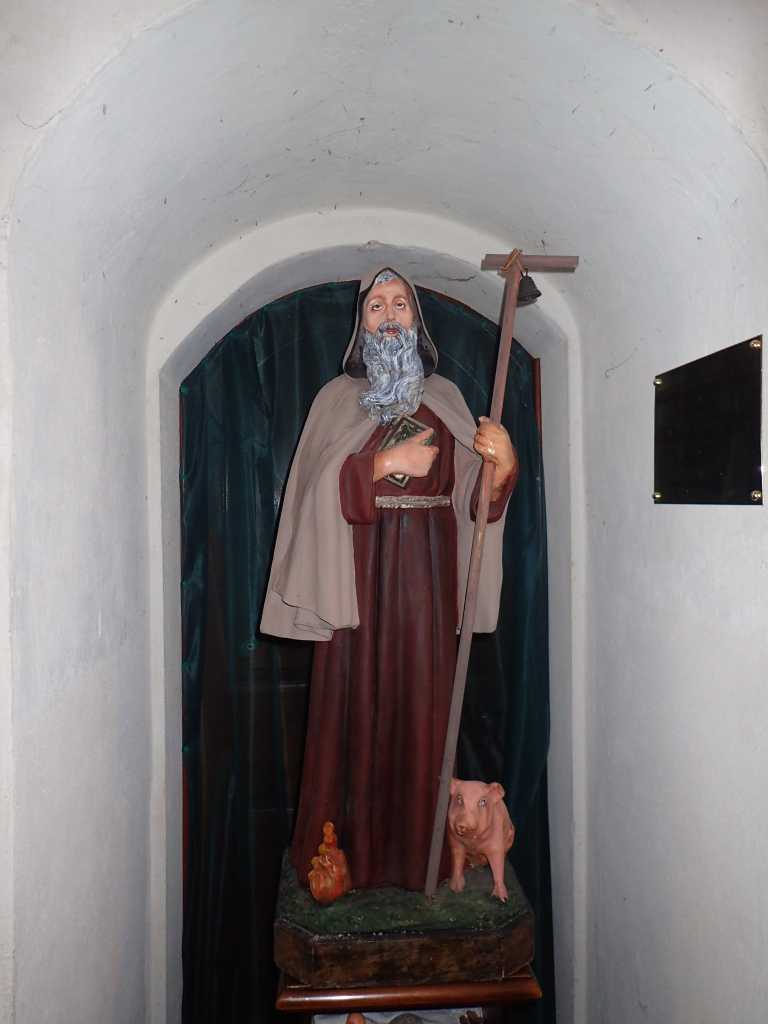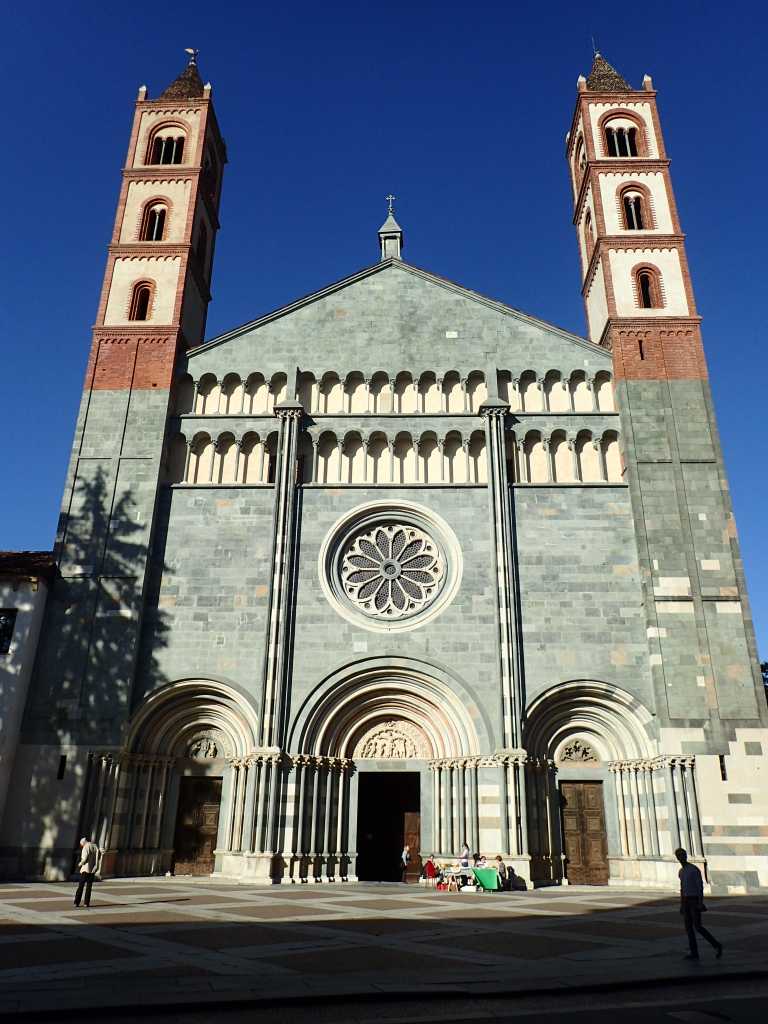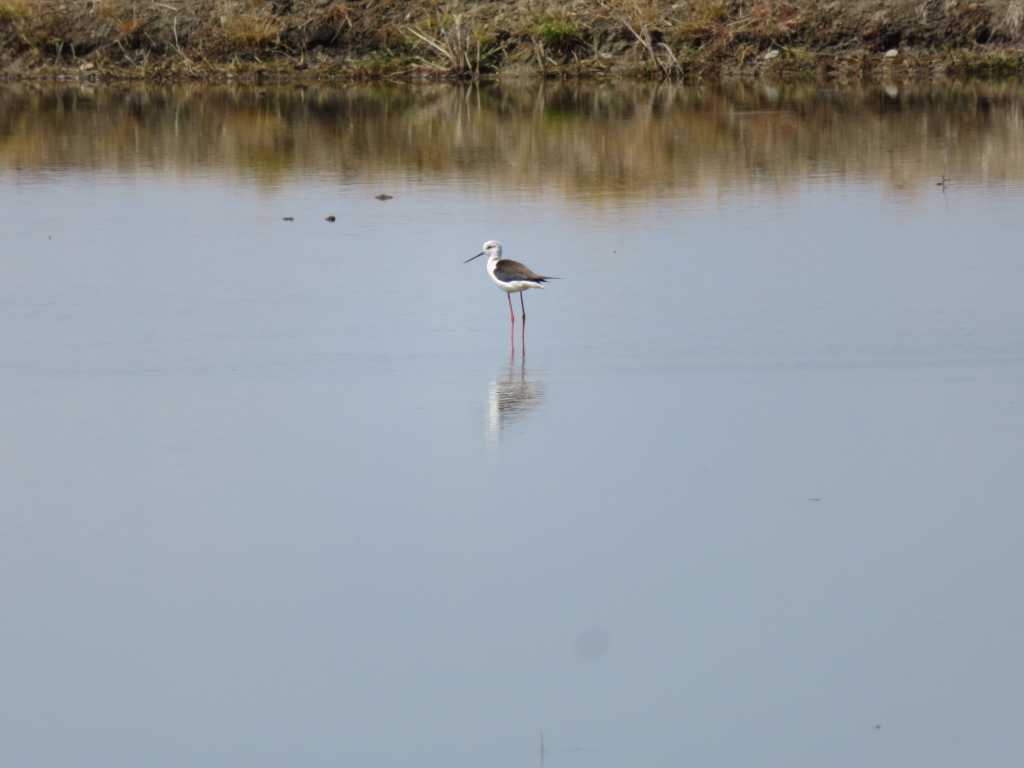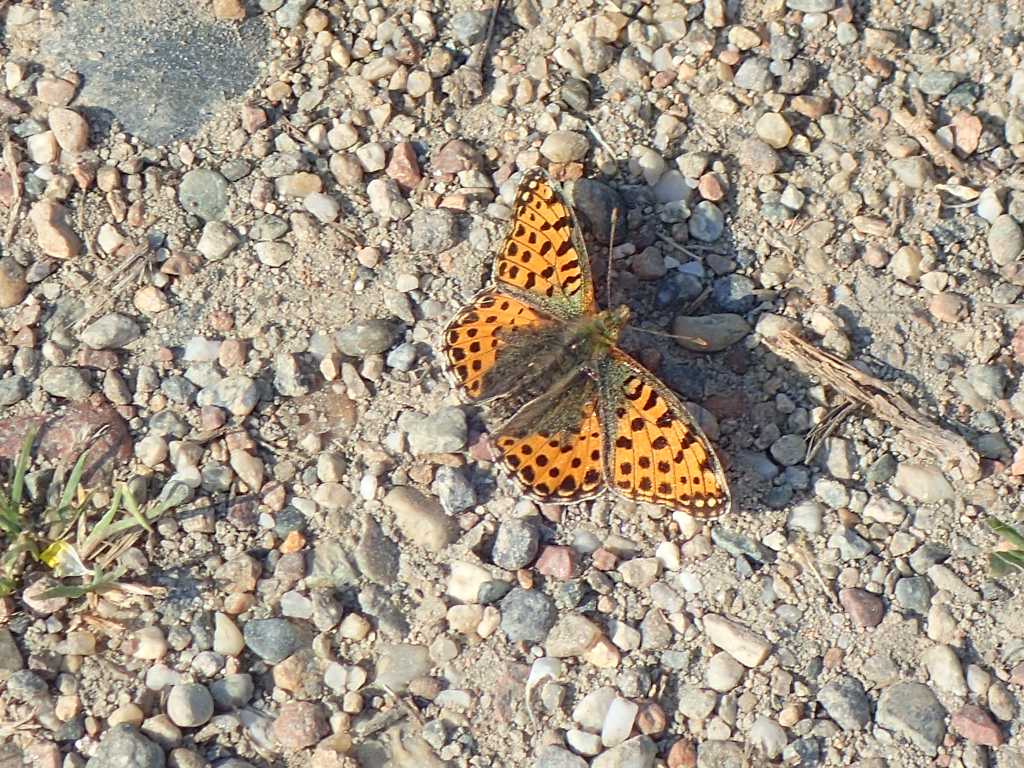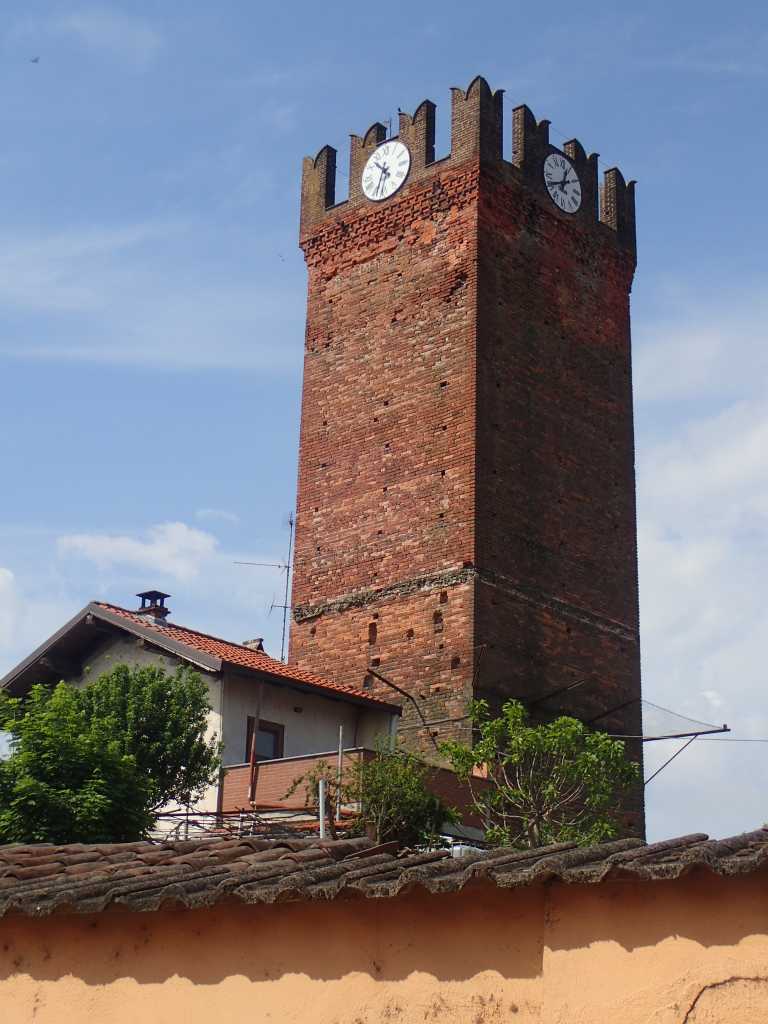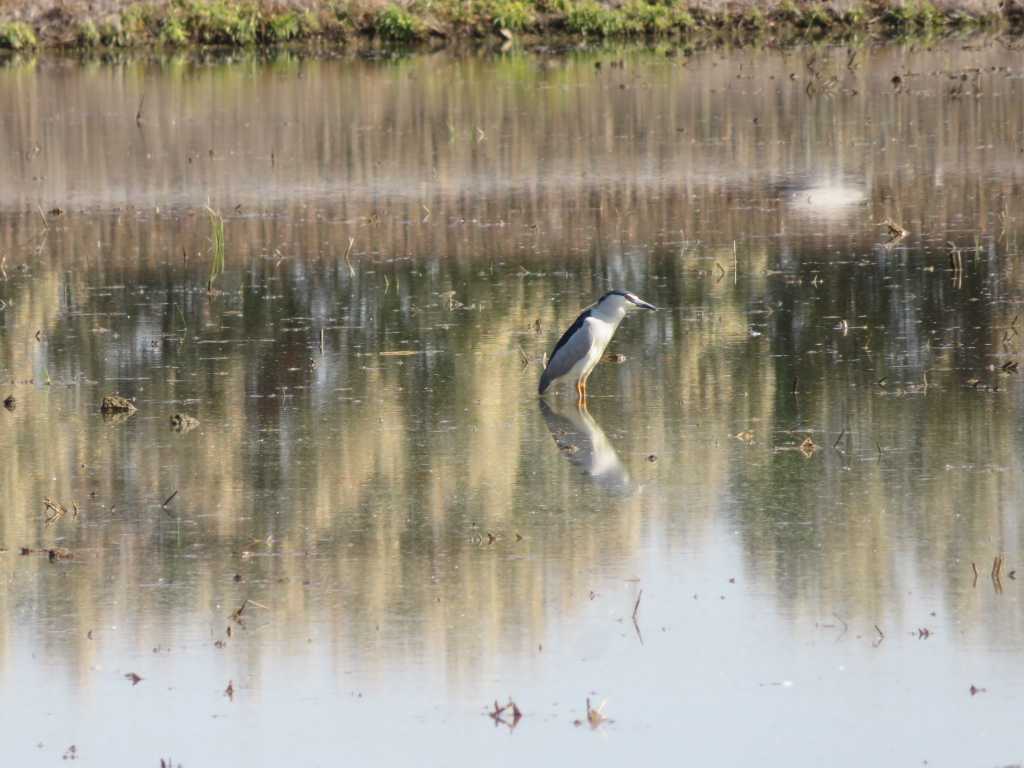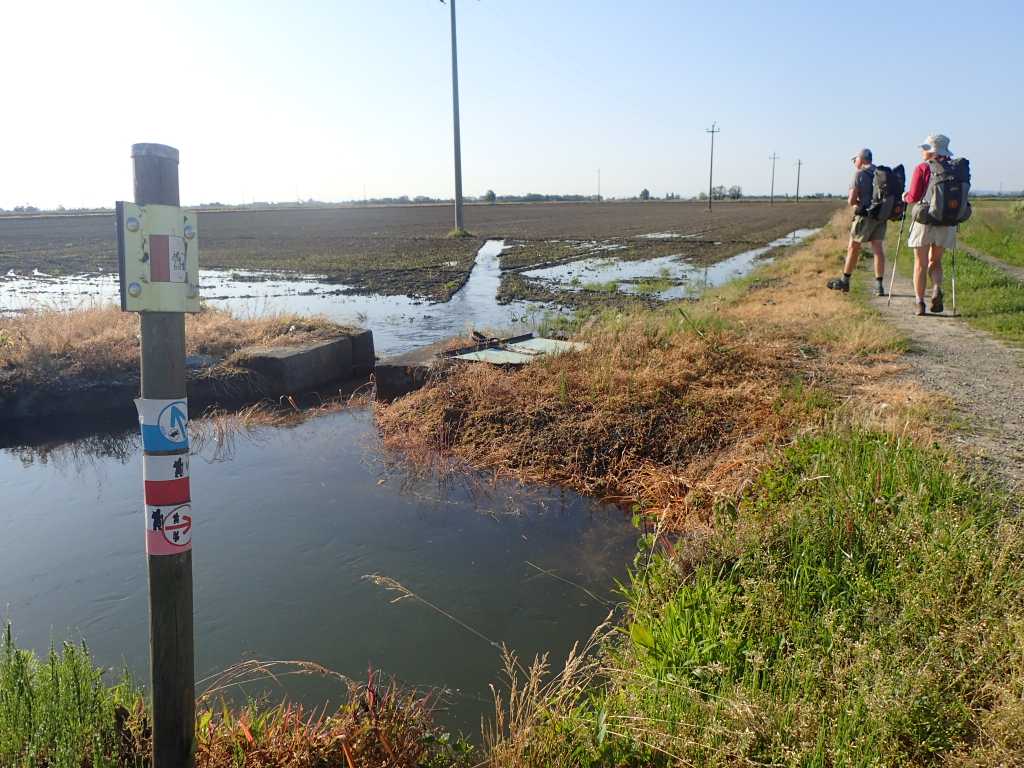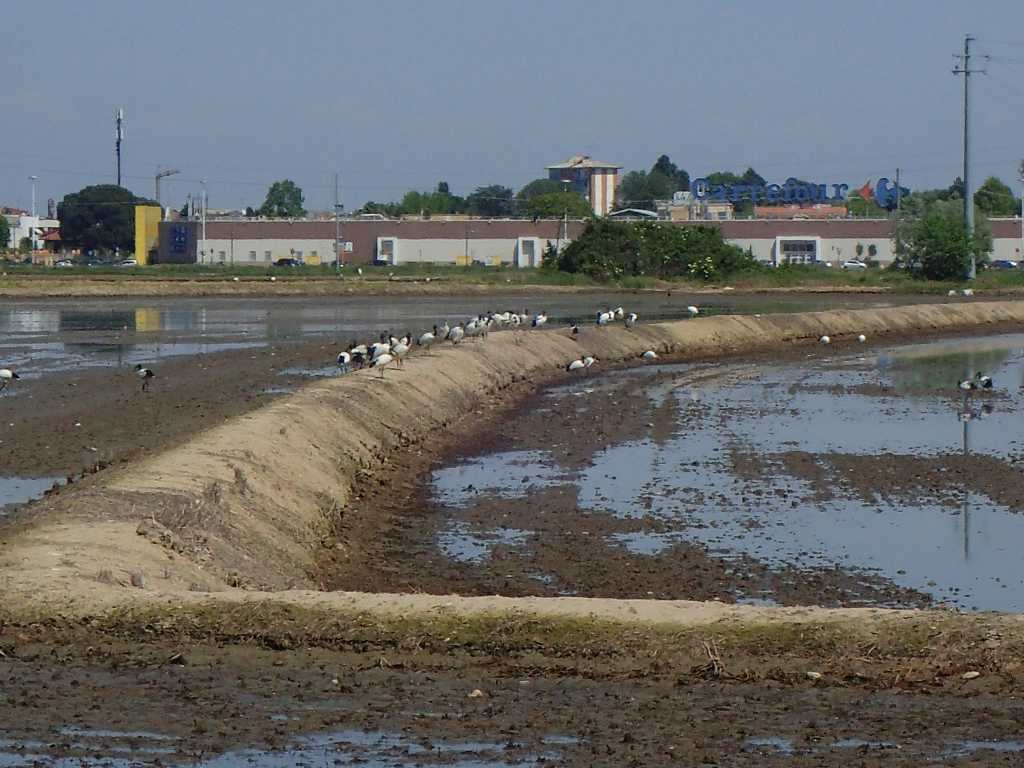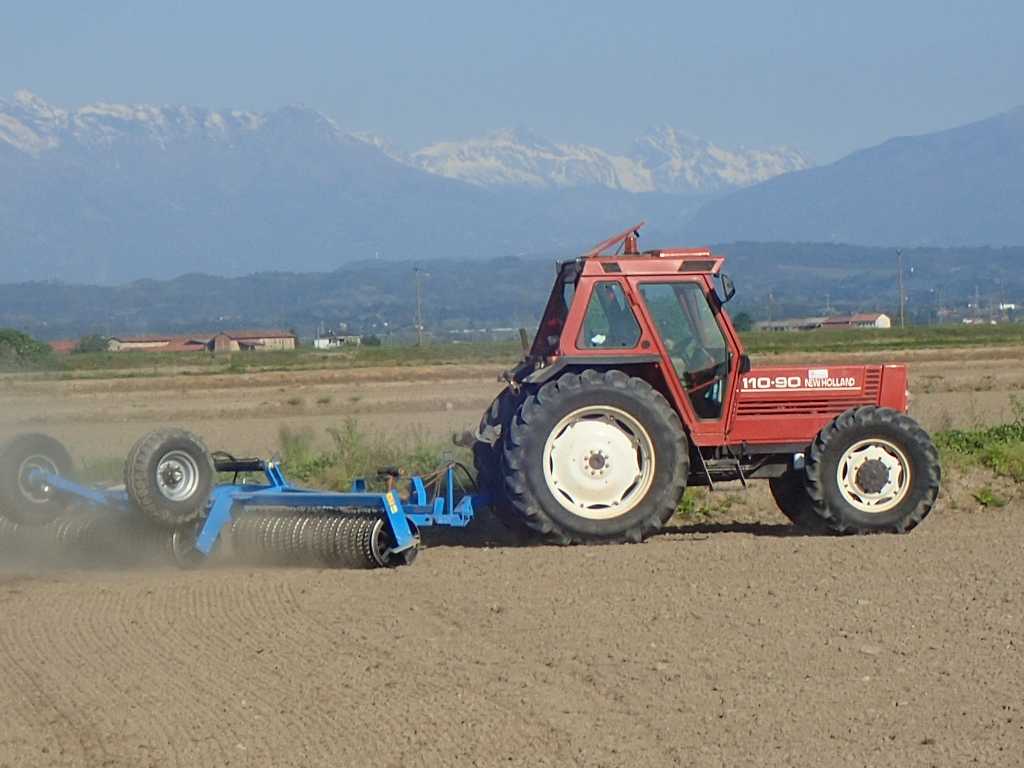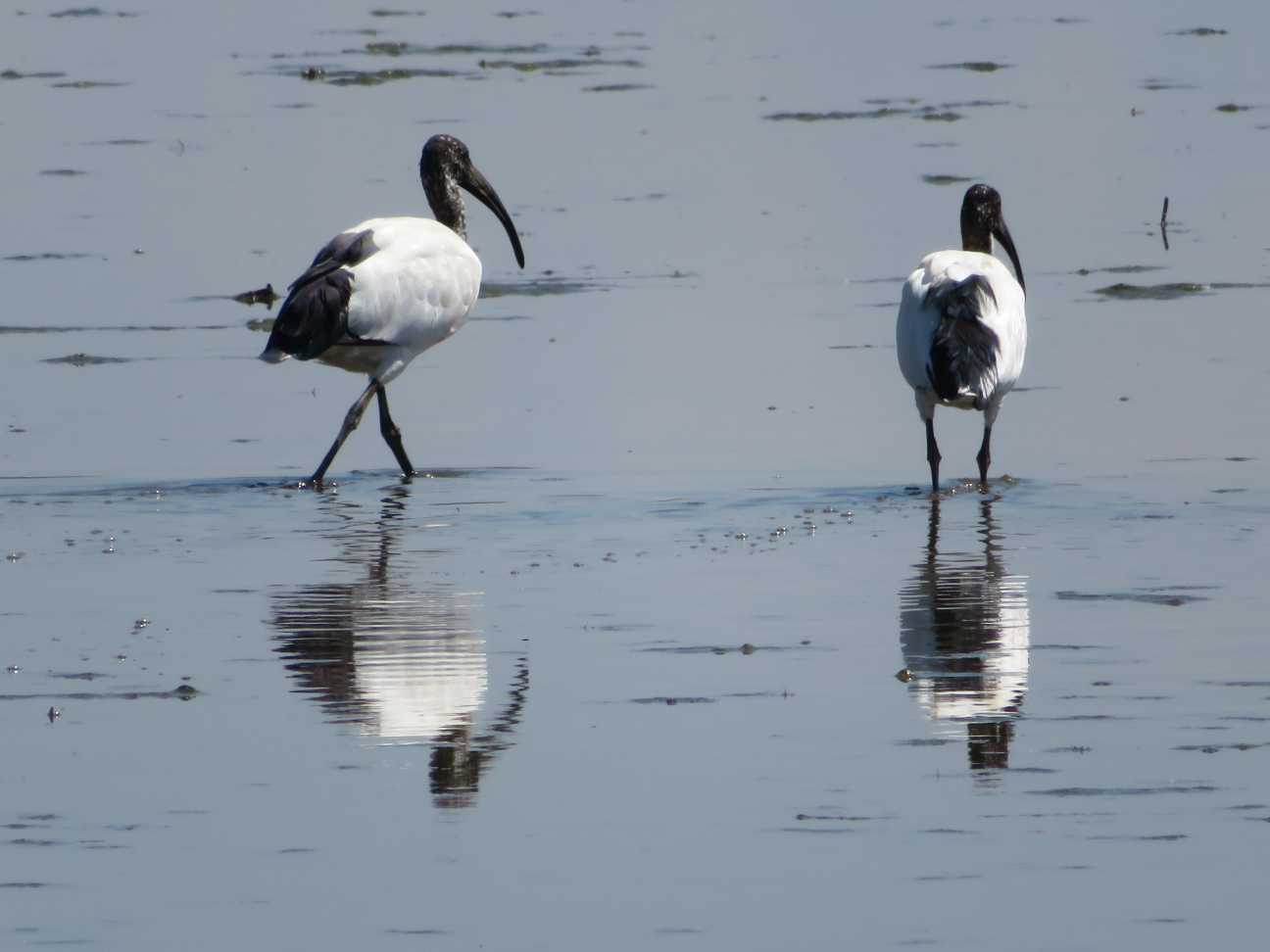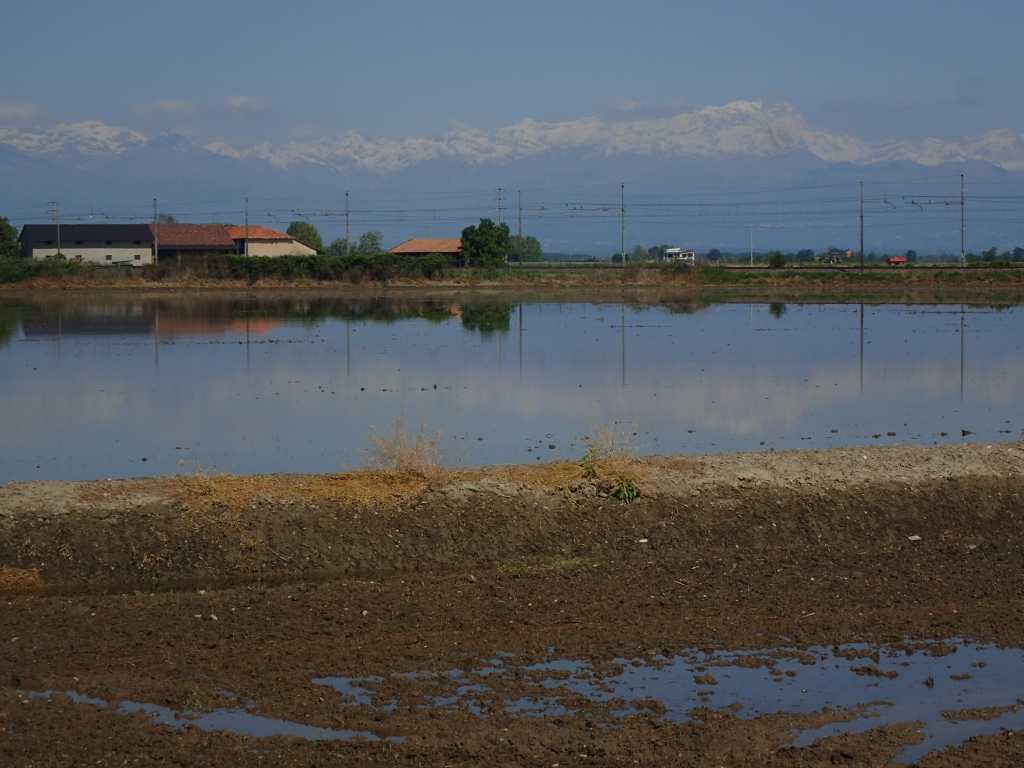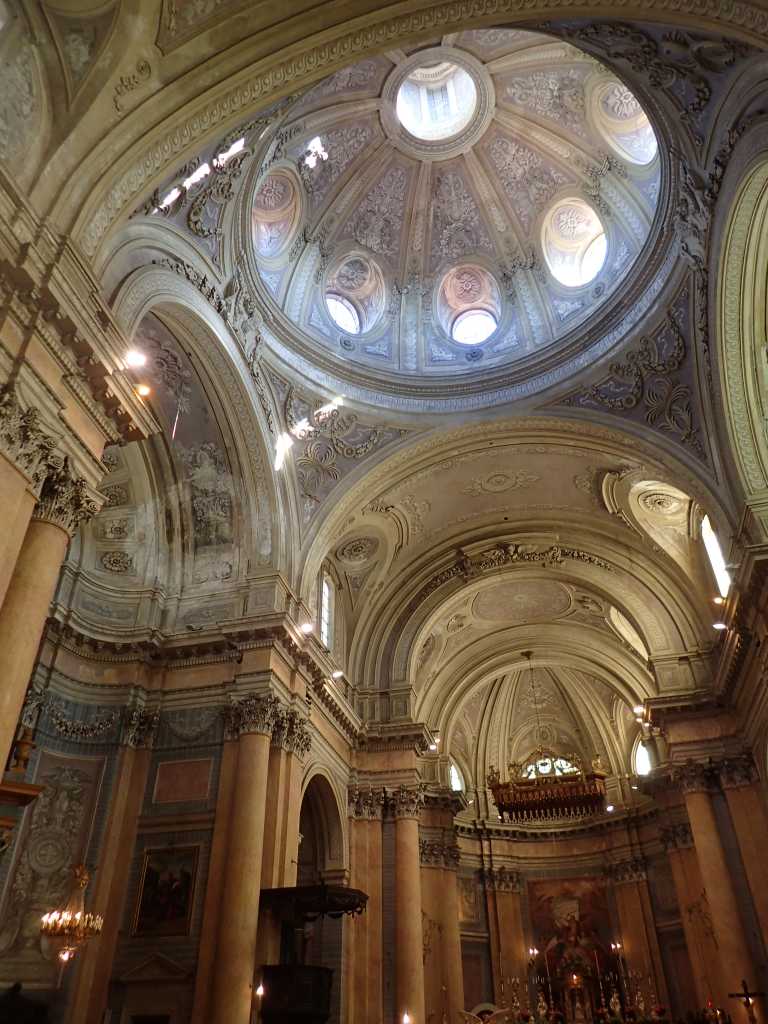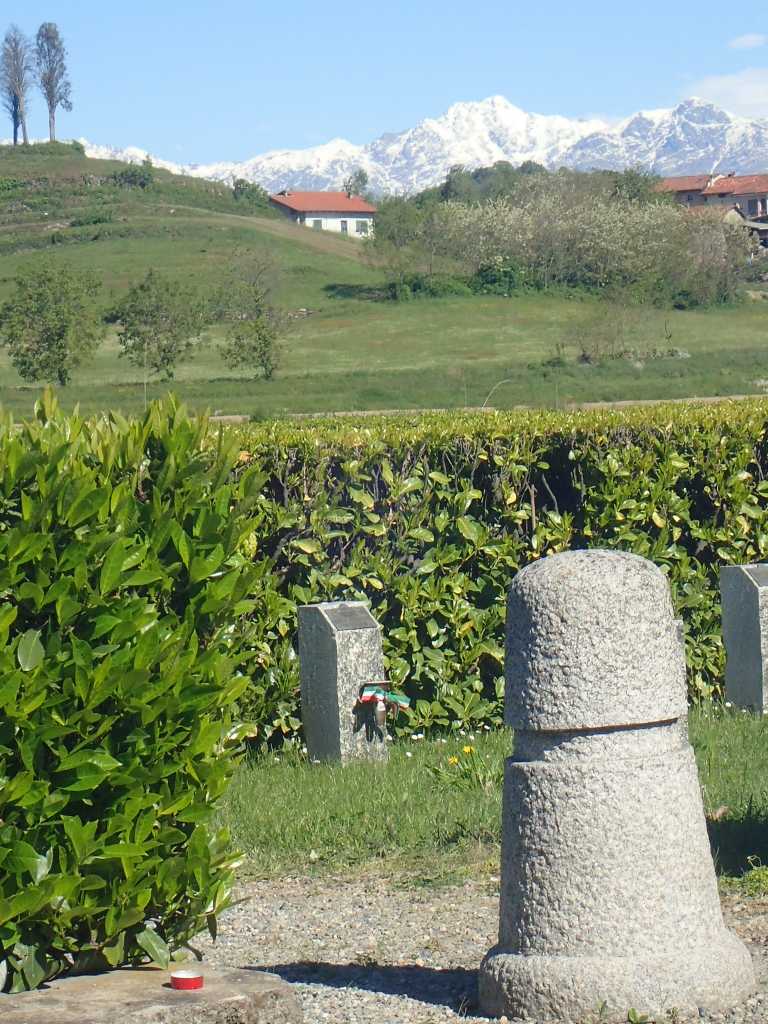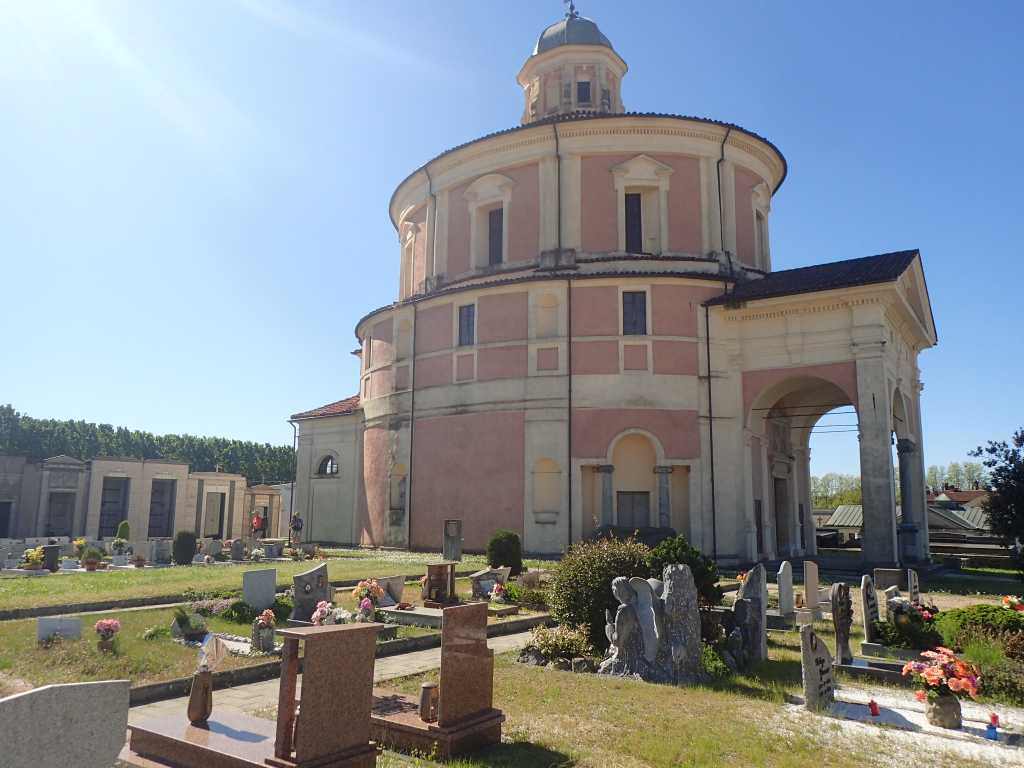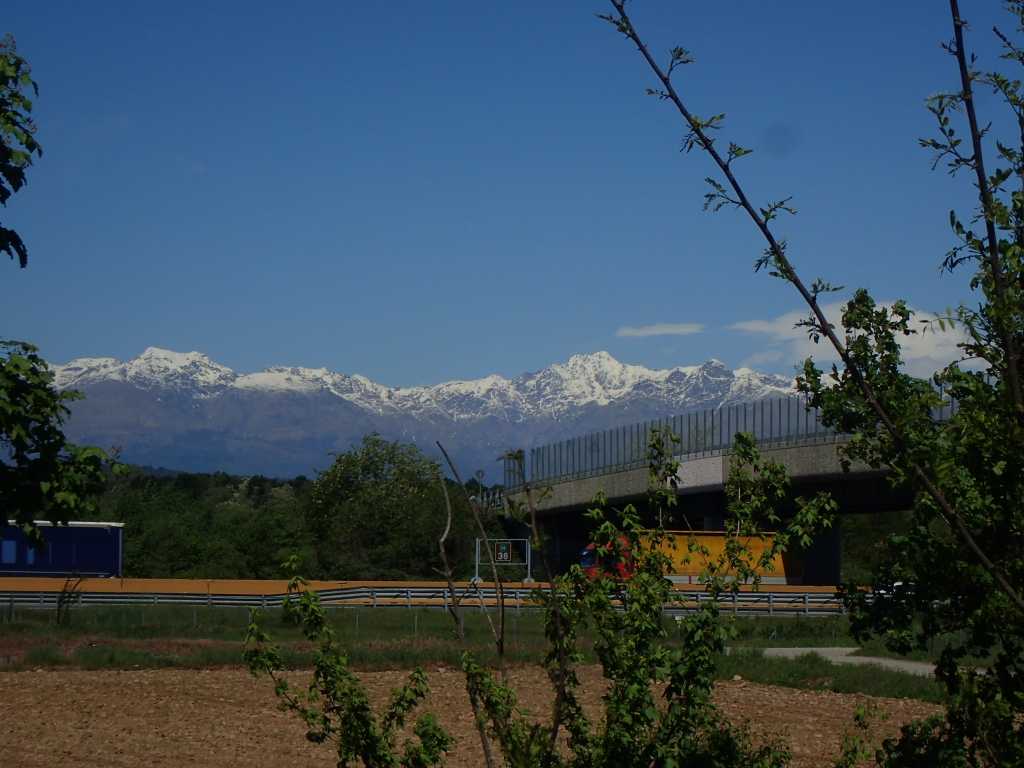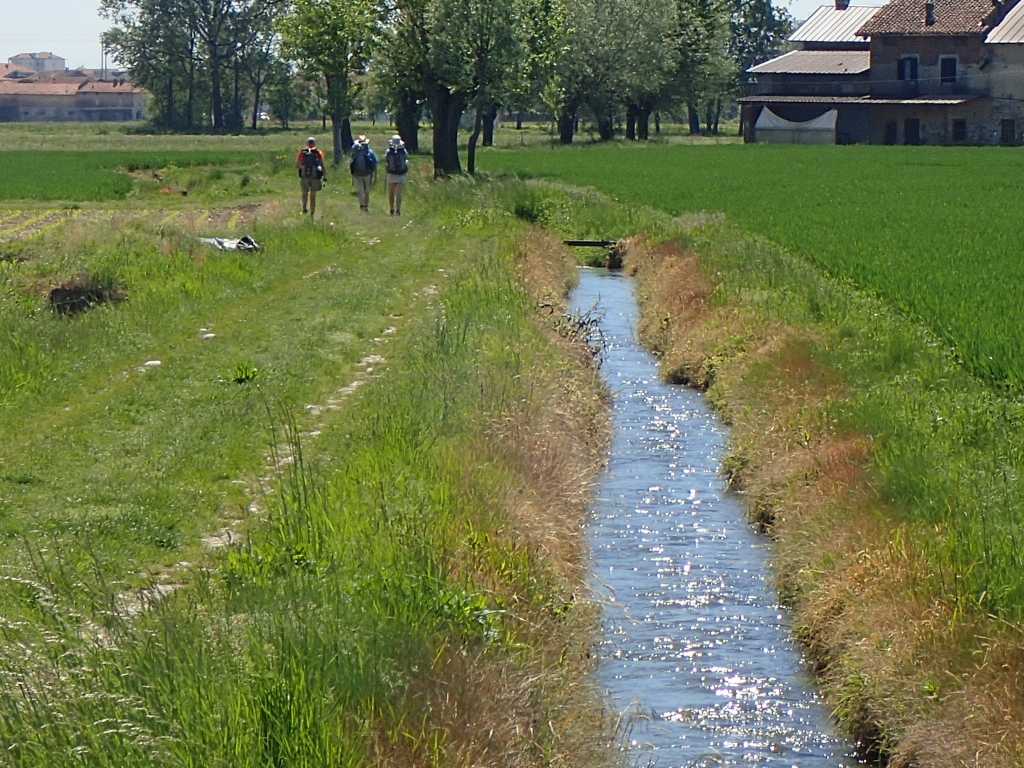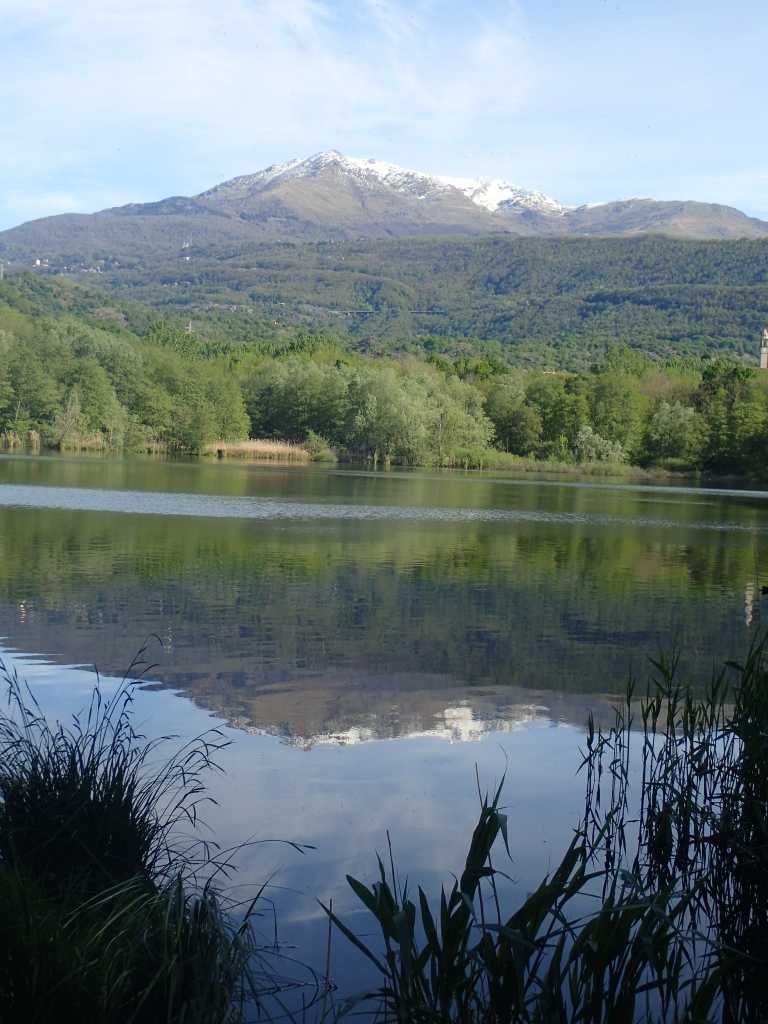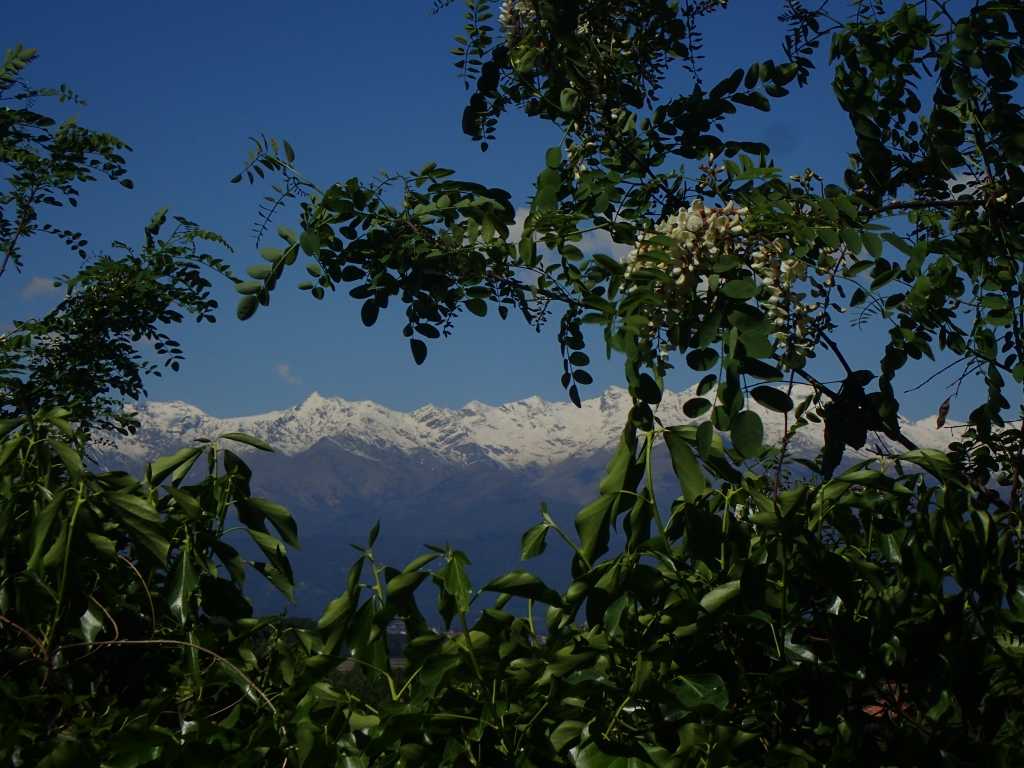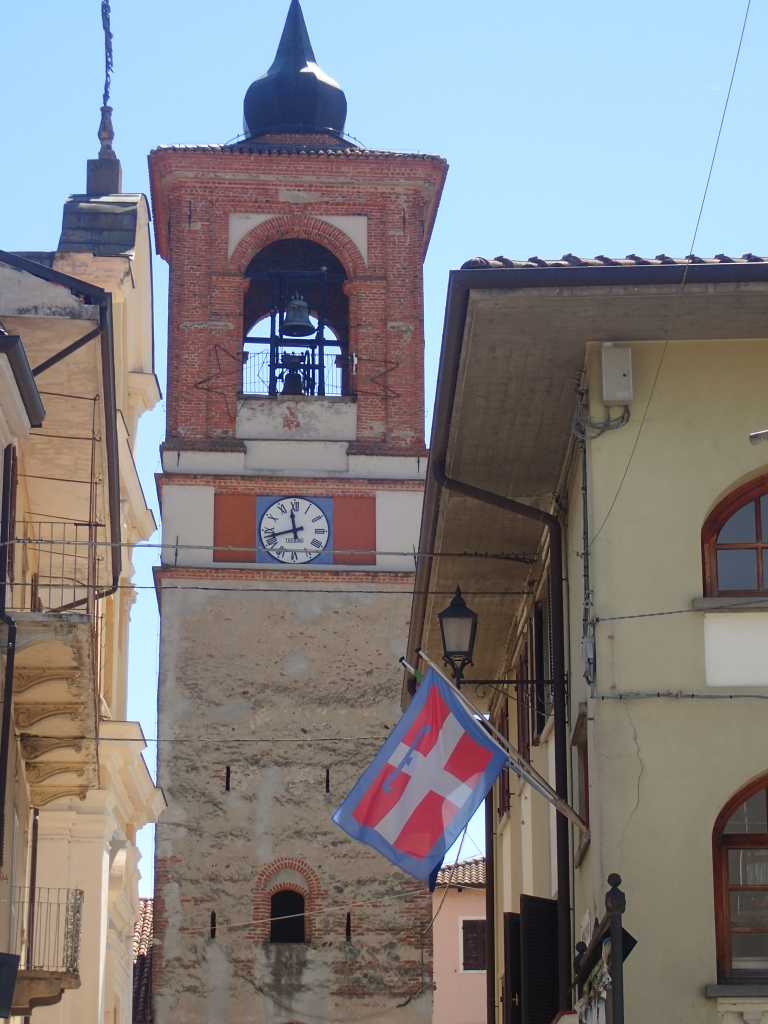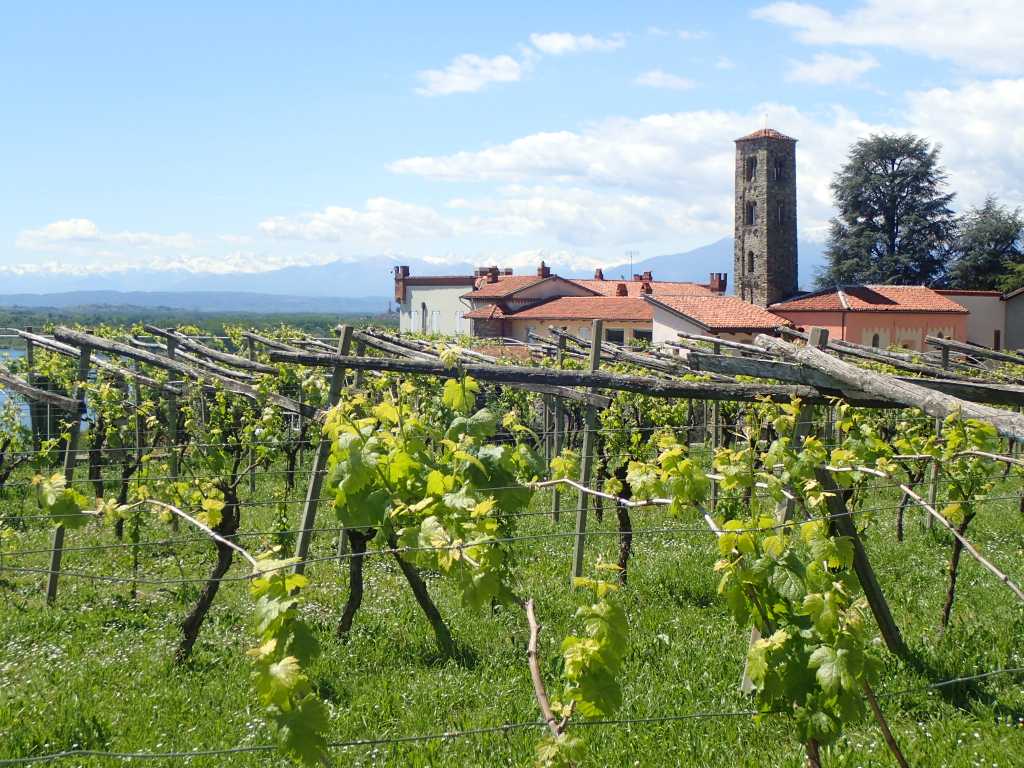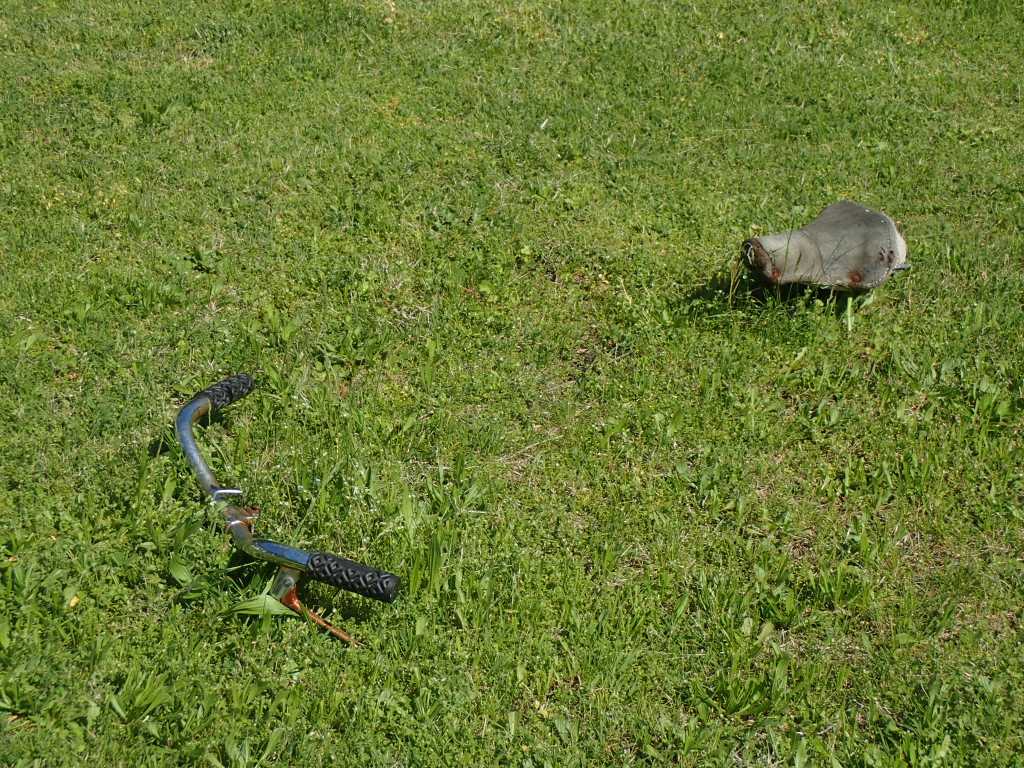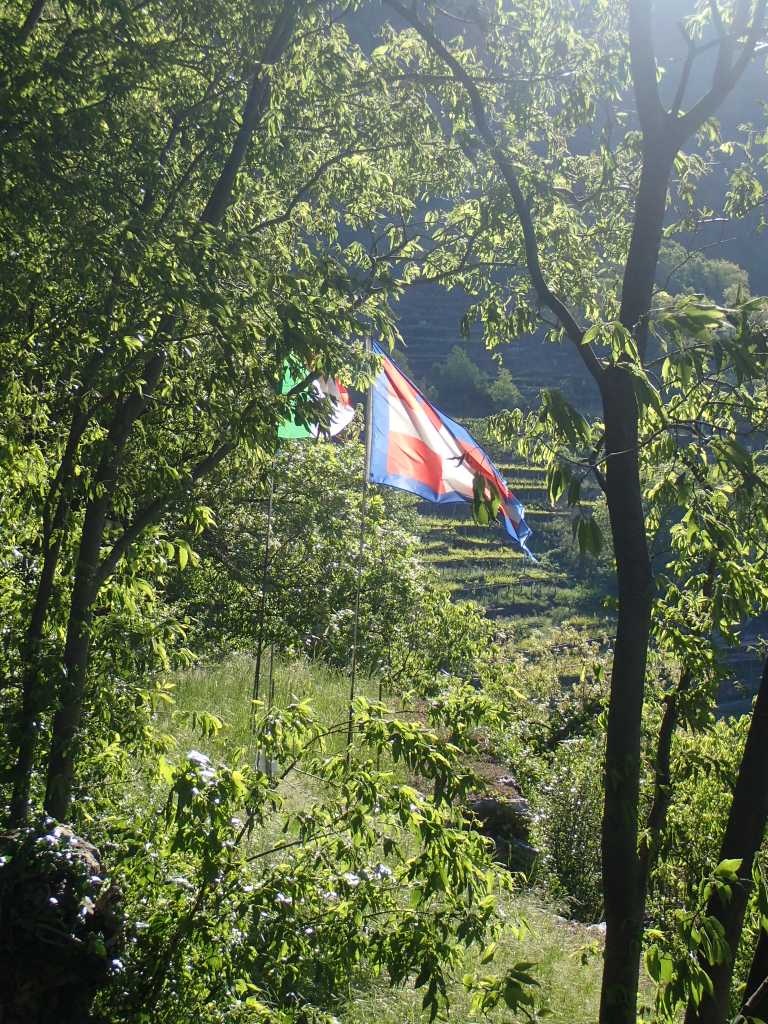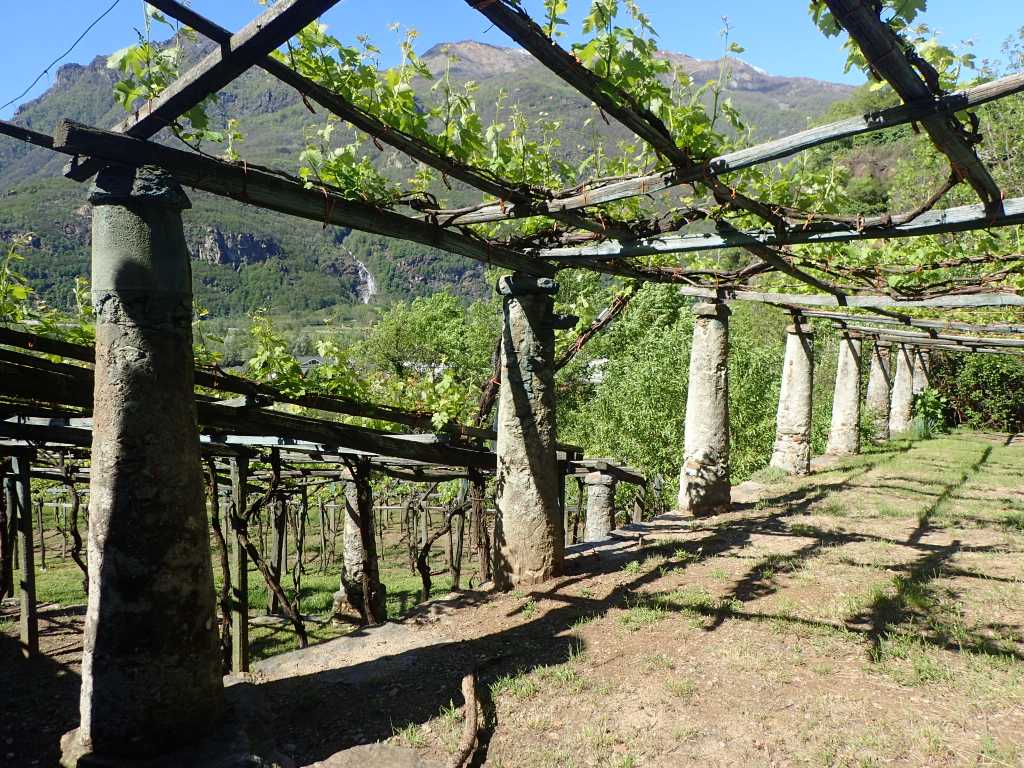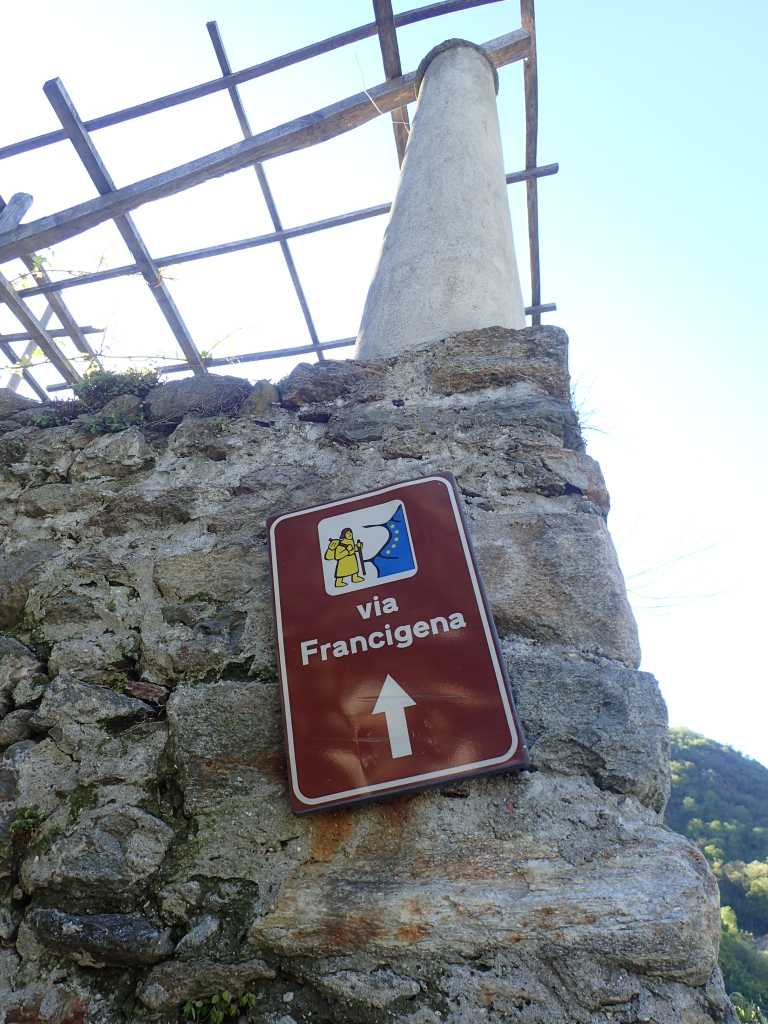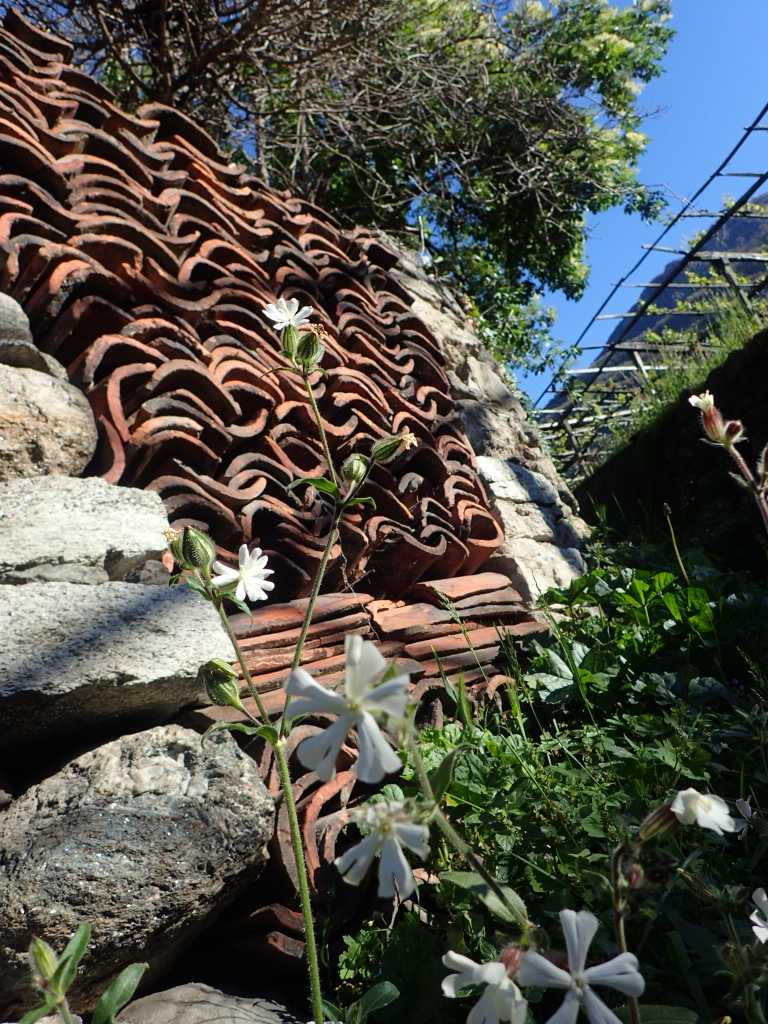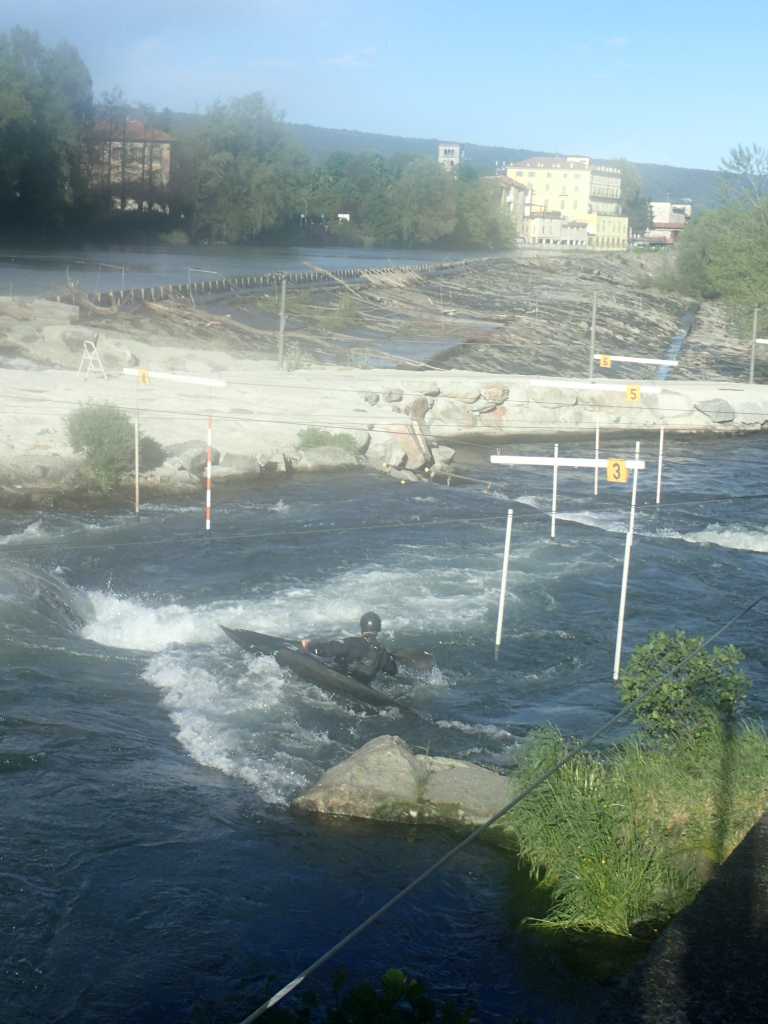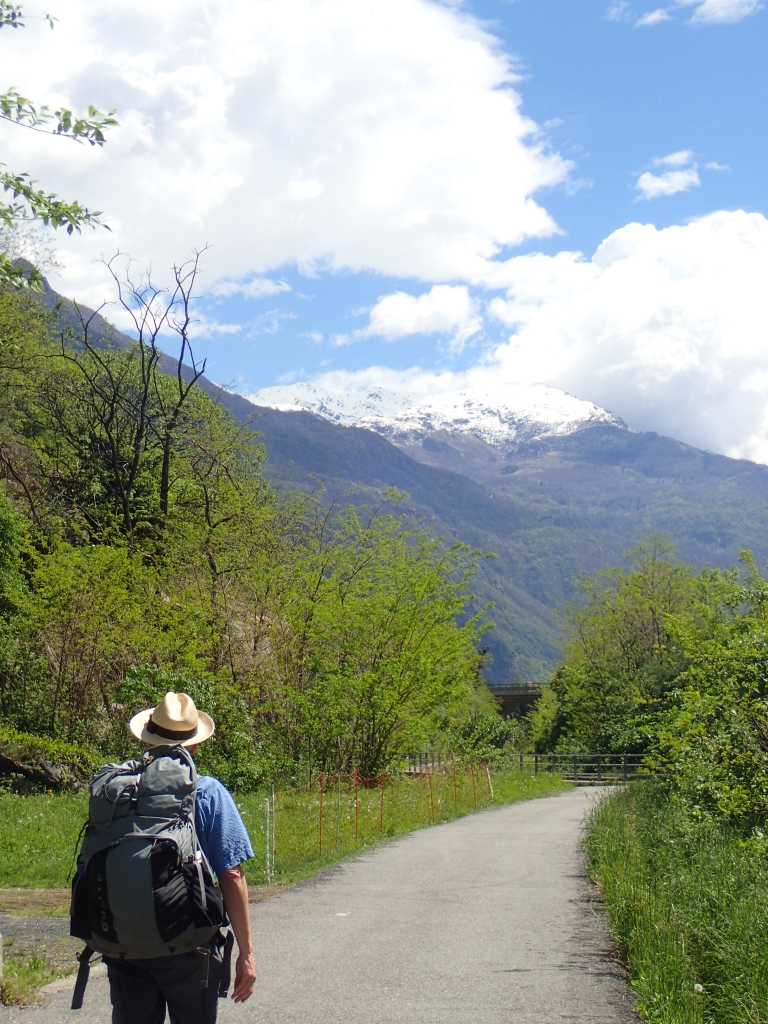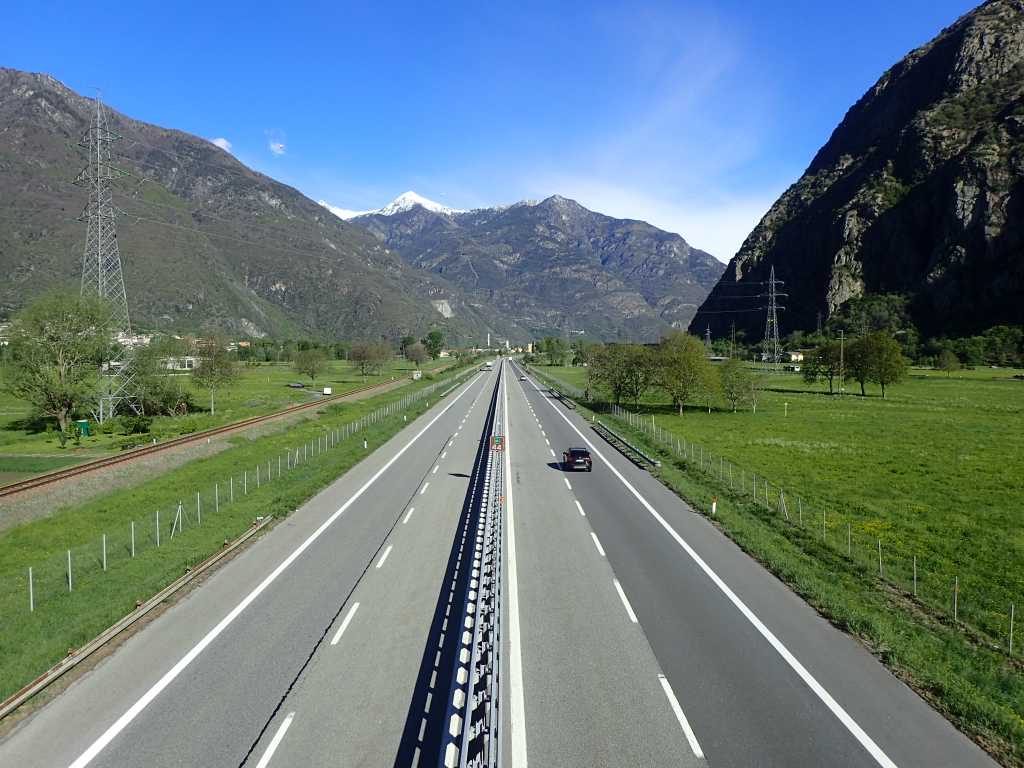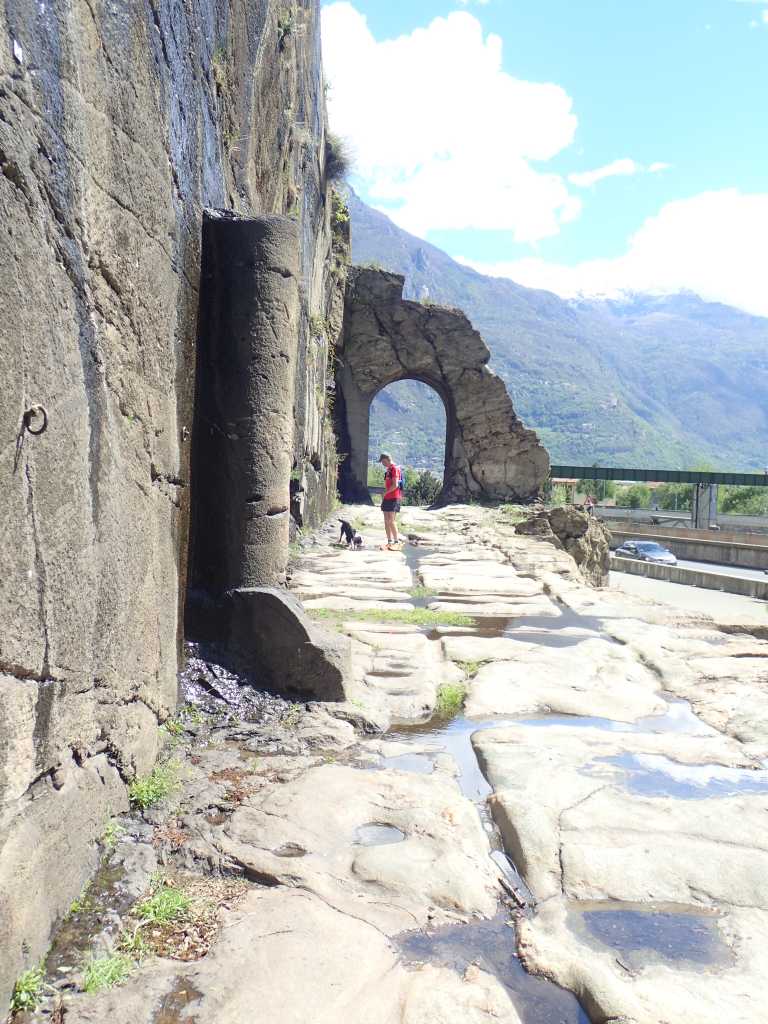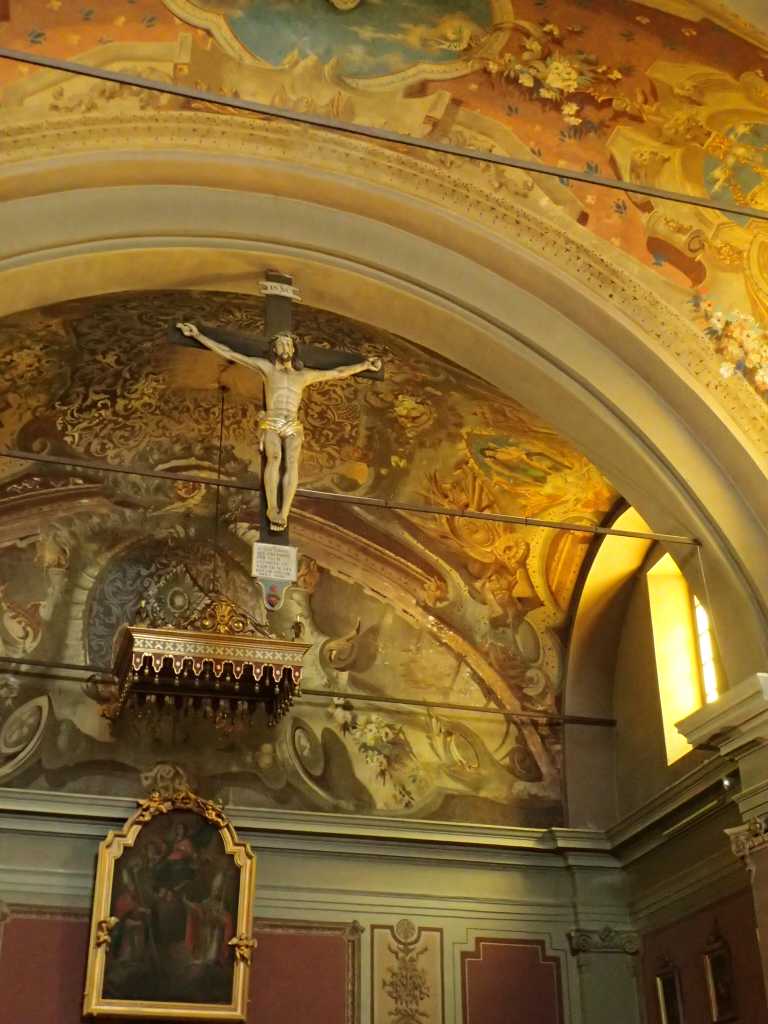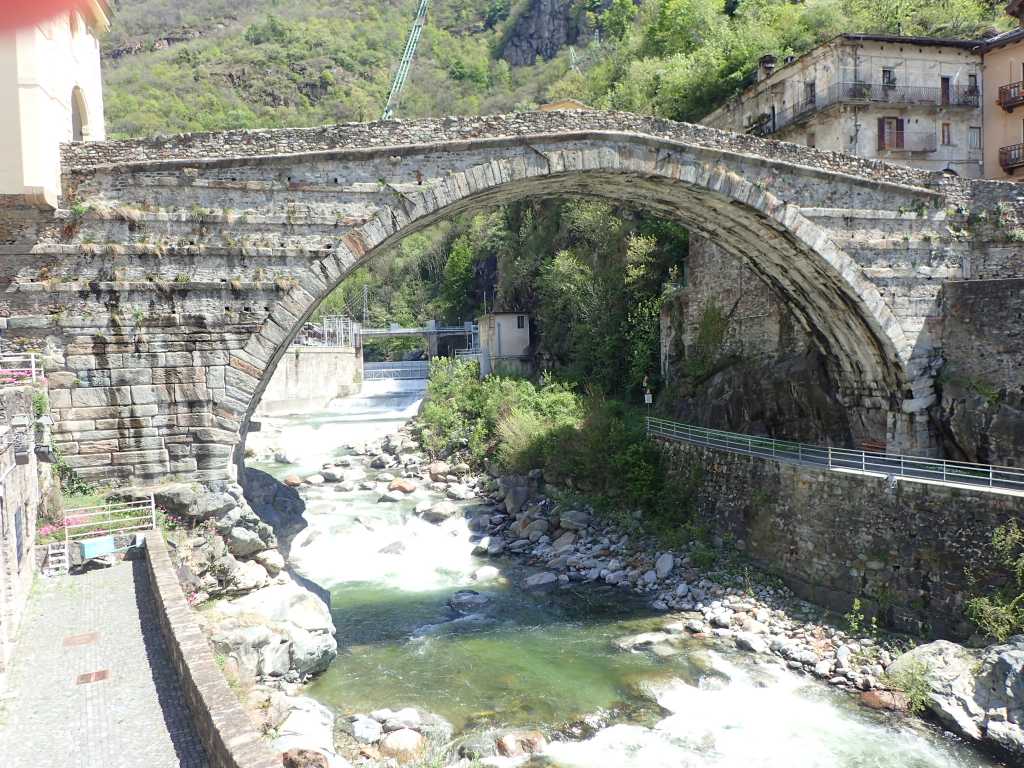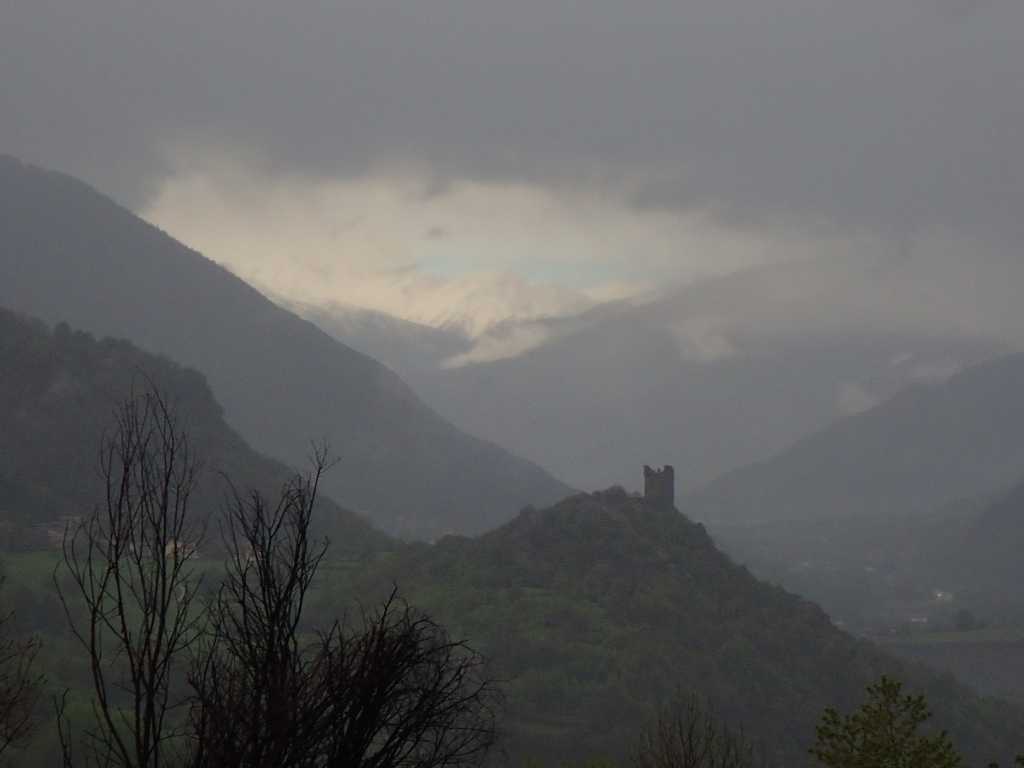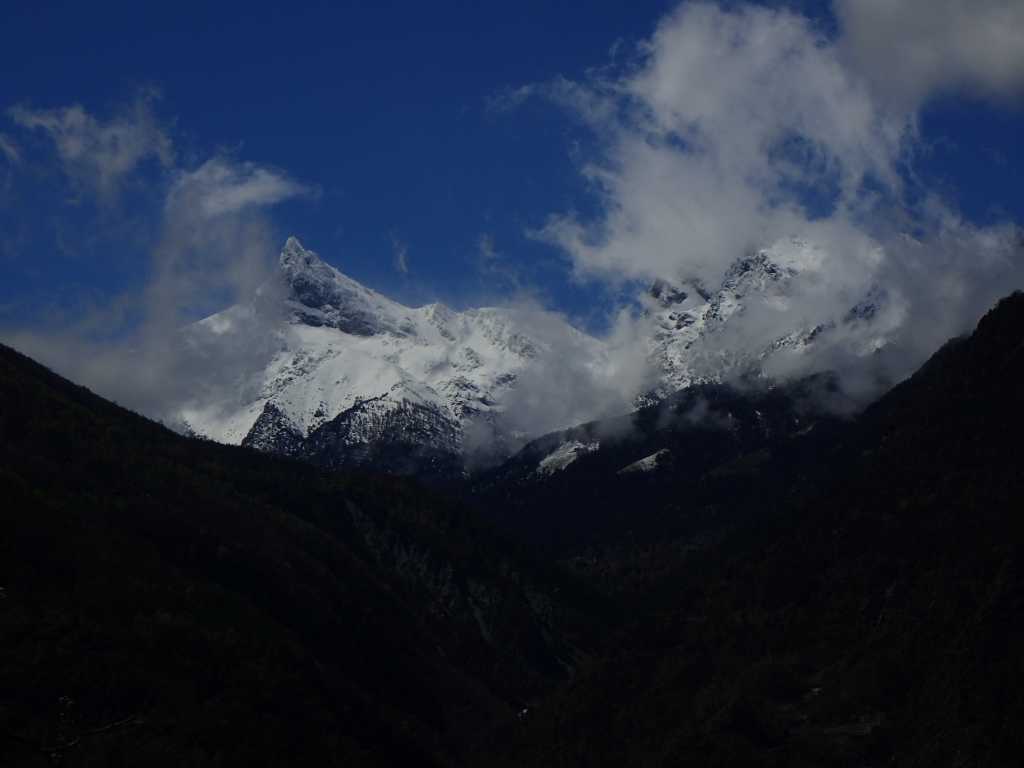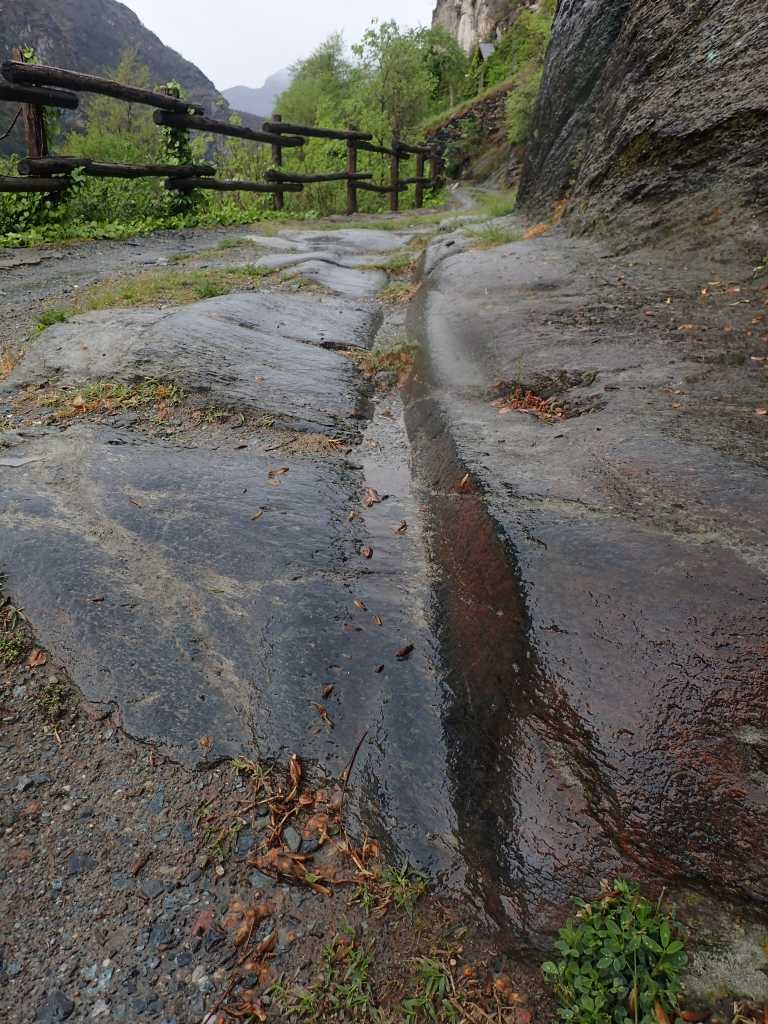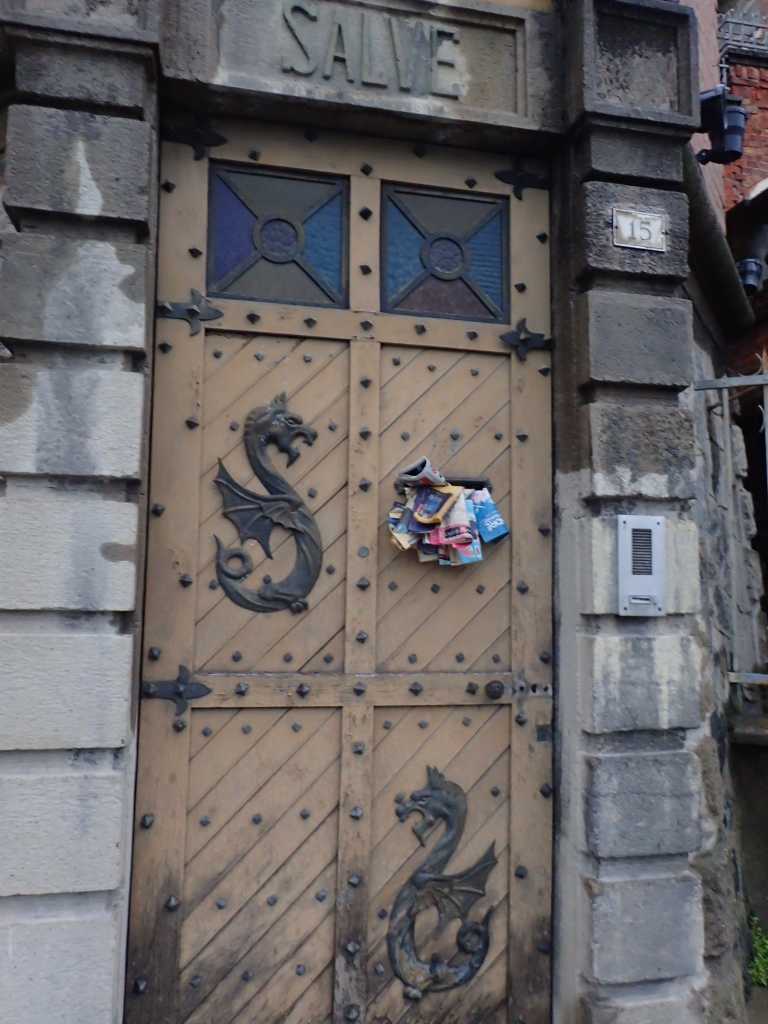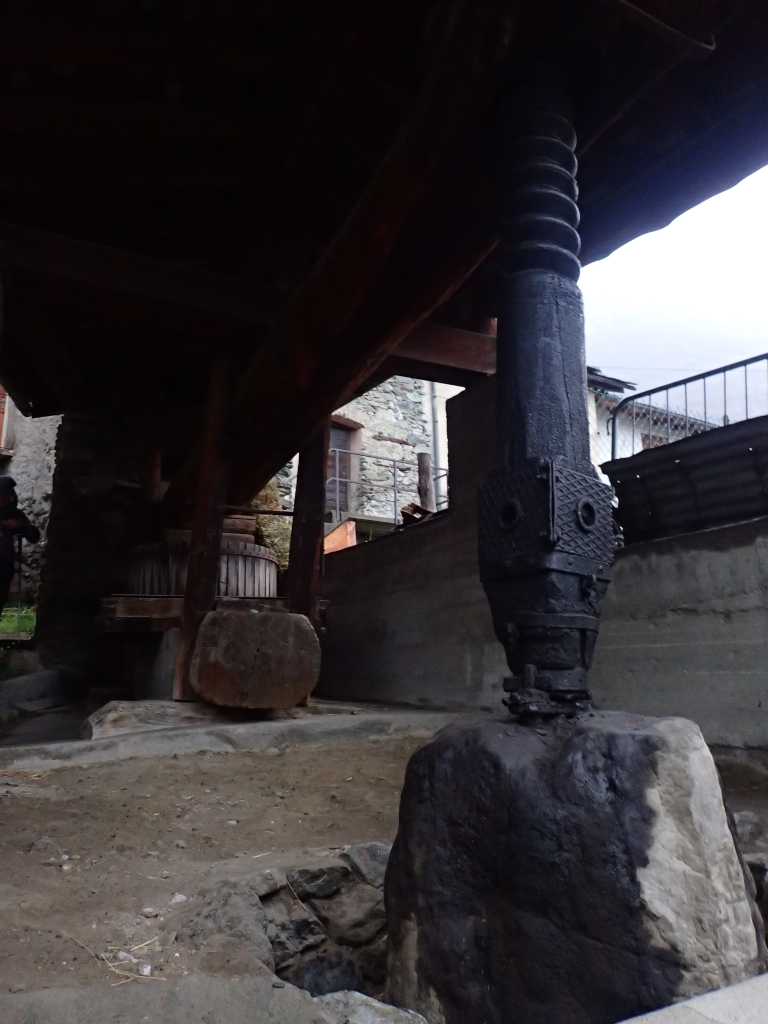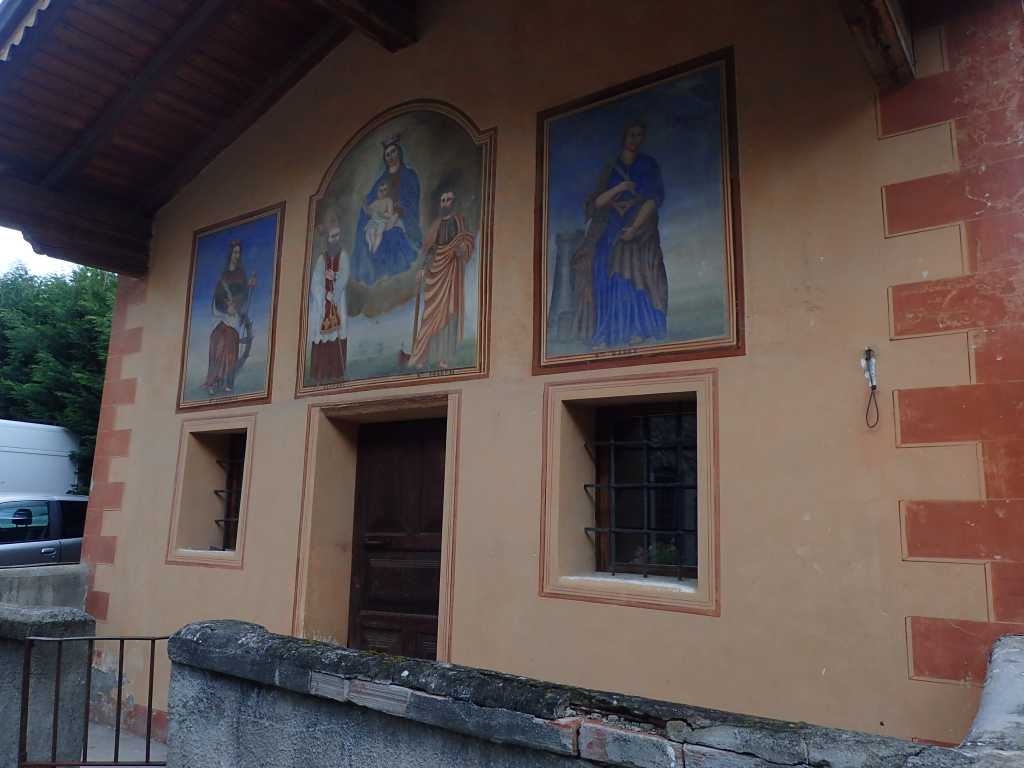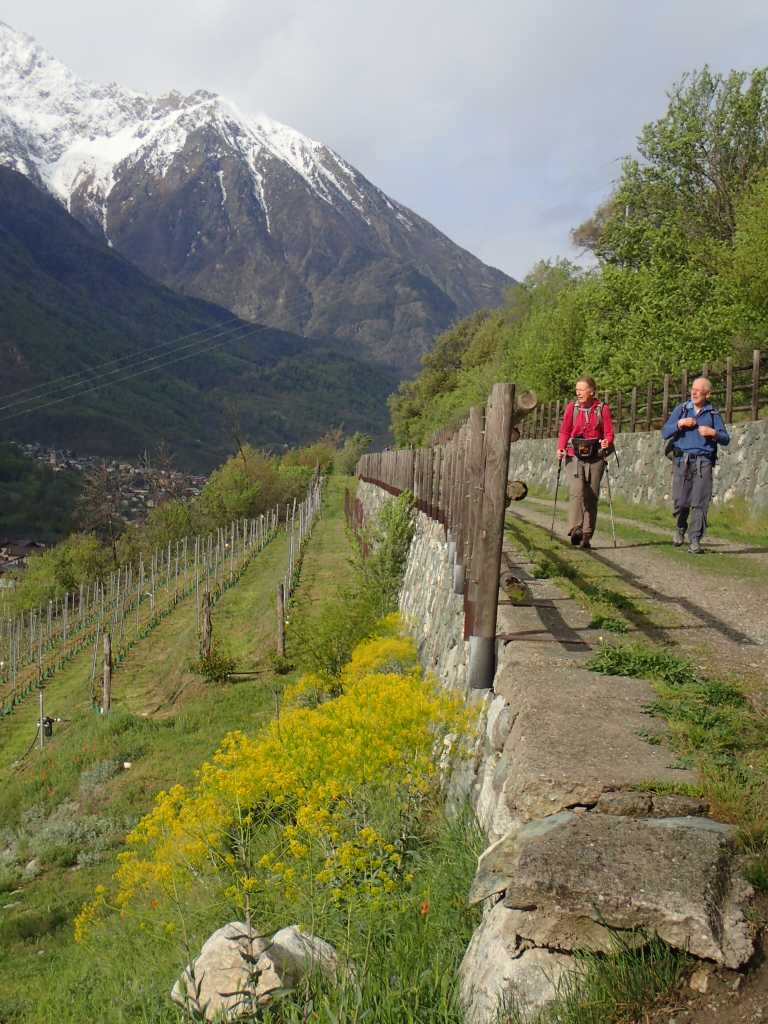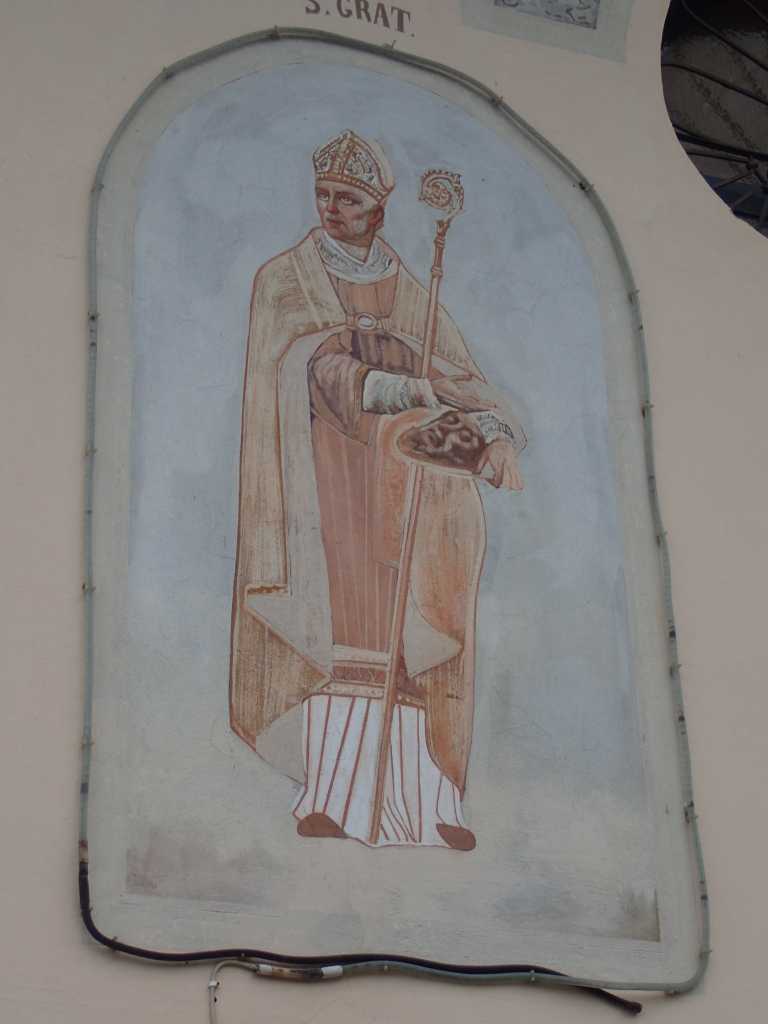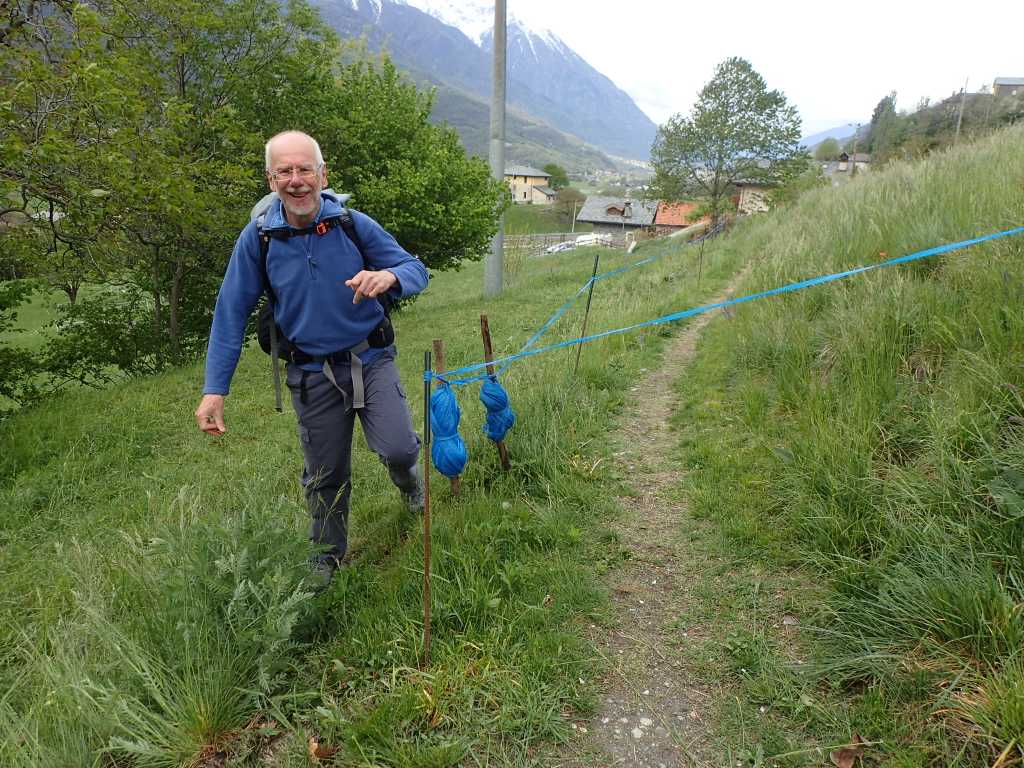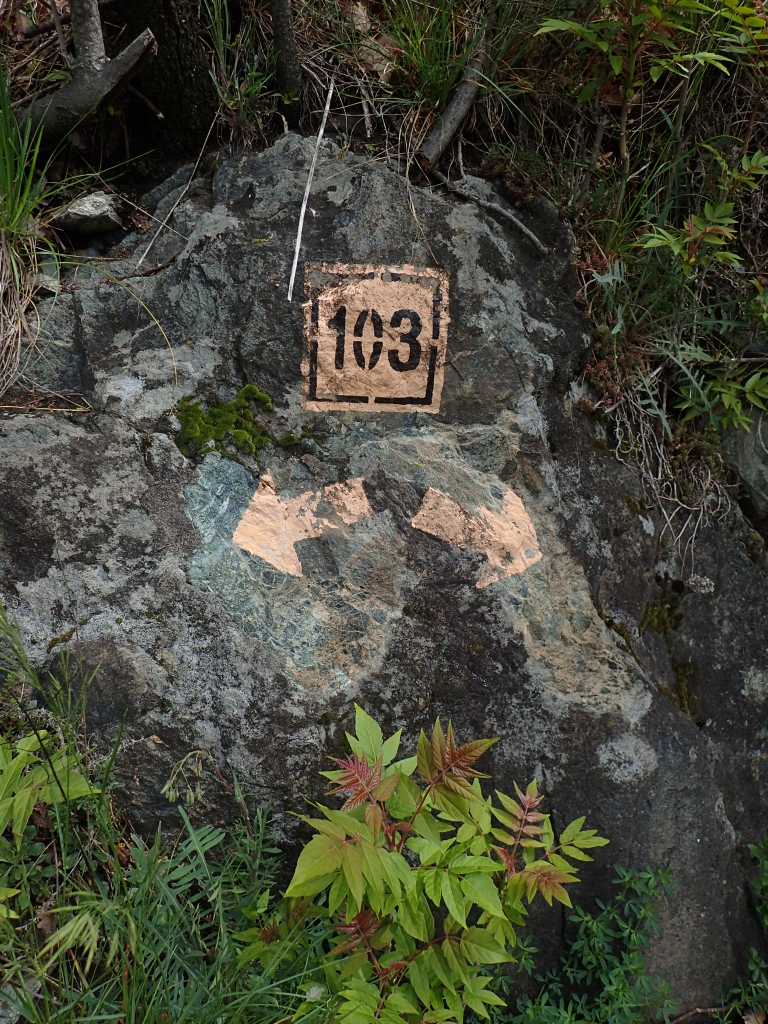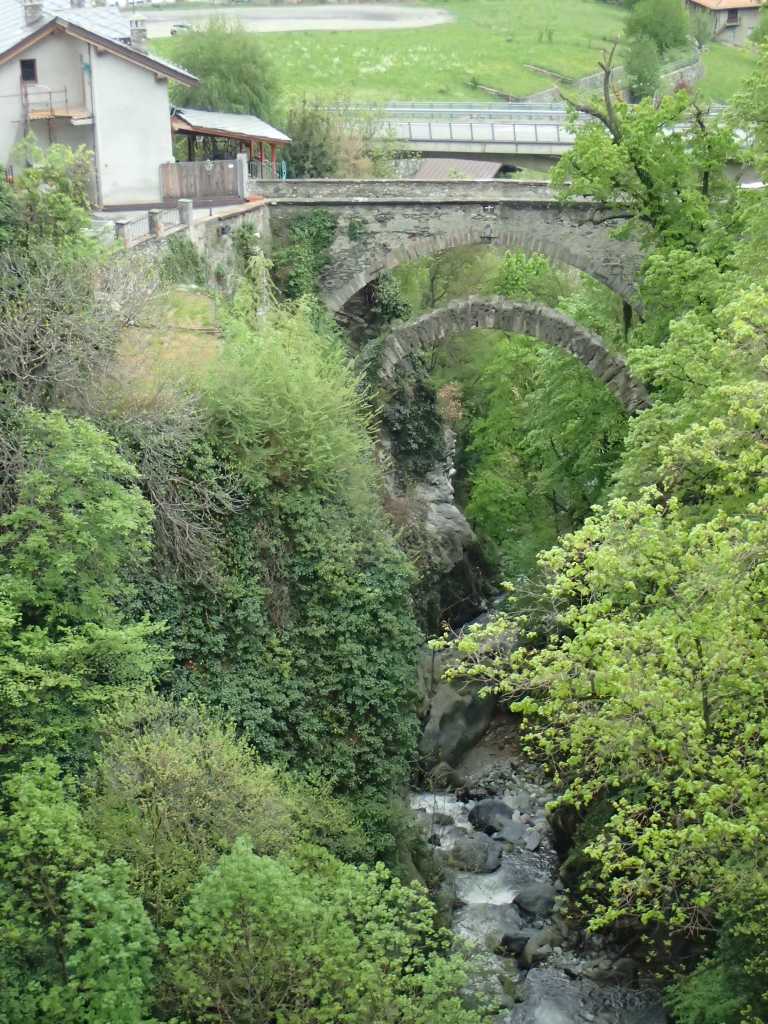17km still very flat. No one complains of lack of sleep in the morning and we set off from behind the police station quite early. The bell is tolling at 6am. Last night we were unable to find any cutlery, Tony without even a spork was obliged to use a serving spoon. After eating we discovered the cutlery draw hidden in the table!
This is another good natural history day. We see more Ibis, Little Egrets, various herons including a Squacco Heron who sits to be photographed by Tony and Betsy. Tim recognises it as seen before on Malta. Butterflies including one we finally identify as a female Large Copper which makes Ray research the butterfly from yesterday which was probably a male Large Copper , these extinct in Britain since 1851 due to fenland habitat loss though Dock plants it’s food are still common enough. A hoopoe flies across and poses on a gutter for just long enough for everyone to recognise it. All in an excellent day for wild life.
We get coffee on time and beer later, and a confirmation that we are welcome at the Abbey of St Albino this afternoon. We believe we will overnight here. St Albinus was an abbot in Angers France 5th century CE. We arrive and cower in the large porch while rain starts and thunder crashes. We become concerned about the adequacy of our beliefs. But at three o’clock the door opens and we are shown in to a large room with some camp beds. Doubt still seems to exist as to whether we are the only guests tonight.
Thunder roils on, two more Italian pilgrims arrive. We visit the chapel next door there is a statue there we presume of St Albinus (from Brittany patron saint of pirate attack. Against!) but no it is St Antonius with a pig at his feet patron of domesticated animals, quite why he has been donated by the local Lions club we don’t know.
2.05 Thursday. Vercelli to Robbio. 21km very flat. Farewell to the mountains
Farewell to the mountains.
We are soon out in the fields again along a gravel track raised above the surrounding ground. The Alps have disappeared in a haze of cloud, rain is forecast for later. Fewer fields are flooded but we see an ibis flying past, lots of Little Egrets and Grey Herons,and a Black Headed Night Heron a summer migrant wintering in Africa. Betsy claims the blackheaded night heron for yesterday but had not got round to checking photos after yesterday’s rather long day. When verification is carried out she has a fine photo of a female Stilt. Fritillaries and Little Copper butterflies flit about, frogs and Nightingales singing in the bushes abound.
We charge into Palestro the halfway point and get various drinks after seeing the tower with pronounced castellations but without machiolations the only remaining bit of the castle of the Visconti family from medieval times. Shortly after leaving town we are in Lombardy.
Once again the multi level nature of the irrigation system of ditches becomes apparent. More flooded fields and farmers harrowing and rice planting. Our hostess last night was saying the rice will grow quickly flower in July and be harvested in September. We did manage to have a quick stroll around Vercelli which claims to have been founded 600BC. It has a fine basilica and lots of other religious buildings. We find the ostello in Robbio easily it is behind the Municipio and the police station, and at the back of a loud clock tower. Hopefully this does not ring all night. The boiler works, the drying rack gets moved down to sunshine in the police car park! We hope it doesn’t get a ticket.
1.05.19 Wednesday Santhia to Vercelli 28km. Dieci Minute!
Out of the ostello leaving the back door keys on the desk (after some searching on Tim’s part, they were in his pocket) and the front ones in the key safe, We go back to the cafe we met Mario in yesterday. It is just opening we inquire about coffee and breakfast. “When the bread arrives! Only deici minute.” It appears forthwith fortunately. The next bar is 17km.
We romp across fields and waterways, many fields are flooded through the complex system of irrigation canals and ditches which are often on multiple levels so that one may cross above another. All cunningly evolved to minimise or remove the need for pumping. The largest canal is named after Count Cavour Ray explains his position as the main counterpart to Garibaldi in the unification of Italy. Given the complexity of both the unification of Italy and the canal system this seems strangely appropriate! We find the next bar and have some more cappuci the lady there says her brioche will be ready in dieci minute. Twenty-five minute later we get some lovely warm croissants with fillings. Something maybe wrong in the translation? Or just another example of Demani!
The farmers of the fields are out planting the Arborio rice the region is famous for. Others are also out and about in the fields we see small waders to numerous to recognise, grey herons, Little Egrets and large numbers of Sacred Ibis all hunting frogs and other delights in the growing or soon to be planted flooded fields.
We briefly leave the fields and in a very small village we find shade for lunch just by an old church we are tiring now it is quite a big day and a bar would be great. Tony suggests there is one 50M further it seems unlikely and we eat lunch. On starting again there is a bar 50m down the road, we continue, muttering.
We are soon in Vercelli and check into the great donativo hostel of Sancti Eusebi. It has a washing machine for 3euros and a drying area. Heaven!
30.04 Tuesday Ropollo to Santhia. Harried Lapwings.
16km Flat.
We get away from our lady of the house by 8.40 she is happy to talk about their walking on pilgrimage routes and has done various Camino’s and an Italian route involving St. Francisco to Assisi.
Soon we get to Cavaglia and get coffee in the main square opposite a church with an impressive dome but little else to commend it, just outside is the graveyard and war memorials in a beautiful setting in fields with distant mountains. The memorial records military, resistance and transported civilian deaths!
The postman stops while we are eating our oranges and gives us water in plastic bottles. Part of the function of pilgrims is to allow locals to feel good about helping, we are happy to oblige.
Shortly after we see a pair of lapwings obviously trying to lure something away from their nest, wherever it is. But then we spot the Harrier that goes down into a field. We don’t know whether it had a good early lunch of baby lapwings! The distant Alps appear over the field and especially on the spiral staircase that is the route over rail and autoroute so that we go round 360deg. Tony metaphorically slides town the banister and gains half a km on the rest of us. We then traverse fields bounded by irrigation ditches sometimes on two levels.
We arrive in Santhia and find Piazza Roma where there is a bar which has keys to our lodgings. In there we find a program for the 1993 Juventus v Moscow match which not only out host attended but the home team of zebras won! Possibly because they played Julius Caesar, well if you had a player called J Caesar you would play him. Ray says he wasn’t really there as he misheard and was therefore in Gaul at the time.
We are taken by Mario across the square to the donativo ostello. This is very serviceable and gives us reductions on meals at two restaurants in town. We feel well braced after our showers. There is s malfunction in the boiler, the water feels like, and probably is, snow melt. But a very pleasant short day across the fields of Piedmont.
29.04 Ivrea to Ropollo White mountains moving!
23km Not a lot of up and down.
Dora races down the fish ladder slalom course outside our window all night. All find it a soothing sound.
Yesterday we leapfrogged a Dutchman walking from Amsterdam. Talking to him we realised that although we had an easy crossing of the Grand St Bernard pass last year he had waited three days for possible weather window and finally walked through the tunnel!
The route today is largely flat unlike our previous few days early morning workouts, but there are excellent views of the Alps across the fields. We stop for coffee in Bollengo at a café keen on pilgrims and get a timbro and a choice of cinnamon or chocolate with our cappucini.
We wander on along small country lanes and footpaths with snow clad Alps getting smaller but somehow more surrounding of the Piedmont countryside. Each village we pass through seems to have a clock tower with an arch through which our route passes. We get to Piverone about lunch time and find the bar closed. Fatalistic we plod on round the corner and there is another. The lady sells us biera and explains she is closing. But we can drink from her glasses in the small village square. This is ideal as we can eat our own sandwiches at the same time with a clear conscience! We linger a while in the sunshine, wondering if this is a typical Piedmont Monday, or is it always this quiet. I
However on the subject of sounds we have heard a cuckoo today and a nightingale. Shortly, after a few more km we get to Viverone and then our destination, the village of Ropollo in which Tony and Betsy have identified our lodgings for the night. After a short wait outside, we are early, our hostess arrives. The place is geared, so to speak for cyclists though one might need to dig to discover this!
Food is a little problematic but the lady promises to phone for pizzas.
28.04.19 Pont St Martin to Ivrea. Shot like small rocks from an Arquebus.
23km and a bit up and down. The Aosta valley has finished we have entered Piedmont with it’s white on red cross (plus or minus a blue border), passed the moraines damming the lakes near Ivrea, and seen the exit of the Dora Baltea from it’s confining corsetry.
Most of the day was spent traversing the lanes connecting the vineyards,which are all made up in the same manner.
Small areas of flat land have been excavated out of the rocky landscape and filled with vines on pergolas held up by characteristic tapering stone pillars which apparently retain heat for the tender plants.
When not constructing vineyards the locals clearly spent their time building chapels or castles on inaccessible crags.
We manage a beer stop at an outdoor climbing centre and get a gratuitous pot of peanuts with a spoon and some round bread things to power us up the next hill.
And Ray finally gets shift of the apples he’s been carrying since Aosta at a lunch stop under the watchful eye of a Saint Rocco by a scrapyard.
The long descent to Ivrea with distant views of glacial lakes through some woods brings us to tonight’s lodgings in the Canoe Club in Ivrea.
We watch canoeists practising on the river as our socks dry in the afternoon sun.
27.04 Saturday. Verres to Pont St. Martin. A day of Bridges.
19km maybe 200m up and 300m down
We did not actually stay in Verres last night even with a shrine to St Roche on the main street, but in a small village Issogne, on the other side of the river with one small shop and a plethora of little alleys. The day dawn’s bright and blue and it is supposed not to rain. The mountains are still white!
We get bread and a jar of jam from the alimentaire next to the bar and start by 8.30. Back across the river , a day of road rail and river crossings as we walk down the valley in the autonomous region of Aosta with its black and red bipartite flag. It has a lion sticking it’s tongue out on it’s coat of arms!
The day I’d perfect for walking and most remove fleeces and trouser bottoms. We pass two more presses and go through the village of Arnad famed for it’s pig products, it takes us a while to work this out as the notice boards suggest it is famous for lard! Which seems a bit odd.
Passing down the valley we get to a bar in Hône jokes about being home abound. But as well as biera we get a few bits of pizza and a load of the local dark bread. Recipe from a notice board after includes figs raisins walnuts and chestnuts. 50:50 wheat and rye flours. It was good.
The bridge between Hône and Bard gives views of the Forte di Bard high above it was built just after the Battle of Marengo in a Napoleonic Brutalist style (that’s made up but it ought to be true) and never saw fighting. It now has a funicular that was probably not part of the original design. We climb up through the town to the church below the fort and then descend down by a fast flowing canal to the old Roman road still in recognisable condition.
The very straight road between this point and Pont St Martin is tedious and we finally settle for sandwiches below the old bridge the original Roman one built in the 1stC CE and the best preserved in northern Italy.
Marching swiftly onwards we find the huge spatious hostel atop the town hall and registry office. There is a wedding tonight but in a new modern block there may not be the same traditions of the wedding night as in Caceres on the Via de la Plata.
26.04 Friday 22km 700m up and down. Chatillon to Verres.
There is light at the end of the valley!
Even leaving out the aberrancy of the Met Office it was still forcast as a bad day. We started in rain at 0900 and rain continued till about 12.15. It was also steeply up out of town past the multi coloured arrows on the familiar 103.
The route is well signposted with yellow signs giving routes as either T or E,T turns out to mean tourist and easy,E turns out to stand for e by eck this a tad steep and we go up and down all day on E.
We are on the south facing side of the valley with a route between very steep vineyards and small hamlets and woods.
The well named Pissin Dessous village has a fine old wine press.
After a couple of hours we stagger,dripping into the Funicular Cafe in St Vincent for cappucini, the church had excellent frescoes,allegedly,we never found the light switch. But opposite a door to the Thermes has rather fine sea serpents on the door.
A little while later and the skies began to clear,looking up the valley it was snow an winter whilst down the valley it was blue skies and summer. We are directed by the signs along the way to very old ?Roman ? Earlier cart ruts in solid rock apparently this is a very ancient route.
Birds began to sing and swallow-tail and orange tip butterflies appeared.
Eventually we descended to the valley floor and marched into town.
Tonight’s lodging in Maison Cassius turns out to be close to a bar where we get given grissini and cheese with our beer,oh the joys of a pilgrim life.
It’s not all good of course, I seem to have selected fizzy red wine from the supermarket again!
25.04 Thursday. Extra Extra read all about it!
We forgot to mention that we were joined by a Buster today. A dog who delights in walking away from home with pilgrims. He was perfectly friendly and wandering with us until spotted by two sets of locals who stopped and talked to us?!?
Shortly followed by an owner in another car who enticed his dog back and drove off. The only occasion we have been deprived of a buster.
Also thanks to Jim and Noline who sent us details from Wiki about St Grat or Gratus and John the Baptist head. He was commanded by divine vision to go and find the head in the Holy land. Returning successful he went to the Pope and handed over the head. It being 500years old by now the jaw fell off and he was allowed to keep it and returned as bishop to Aosta with his friend St Jucundus.
25.04.19 Thursday. NUS to Chatillon Another saint!
15km up and down the south facing valley wall about 400m
A much better day almost no rain, a few drops and clear snow covered tops all around. We are off about 9am for another short day up out of Nus with some beautiful views across and up the valley.
Plenty of flowers as we swap well made grit paths with tarmac side roads well above the motorway and railwa in the valley bottom. Soon we meet a field of cows with an electric fence some have a shock crossing. Bits of stick strategically wound with conductor may assist crossing.
We come across references, mainly murals on some churches to St Grat a local boy from 4th C Aosta who made bishop and seems to have the whole valley in his care with particular reference to the care of crops and prevention of insect damage. Quite why he has the head of John the Baptist tied to his wrist we never find out.
We continue to follow the 103 the Italian path number for this route down the Aosta valley, it eventually takes us to Chatillon where a seriously deep gorge sends a sizable stream to join the river Dora Baltea. This gorge was bridged in Roman times as this was the most important route into Gaul. It’s remains maybe on the photo of the gorge, or maybe not.
We find our lodging for the night and try to get a timbro (stamp for our pilgrim passports) in the main church without success, though it does have some nice stained glass.
risotto again tonight as we are not carrying half a kilo of rice tomorrow as well as today!
